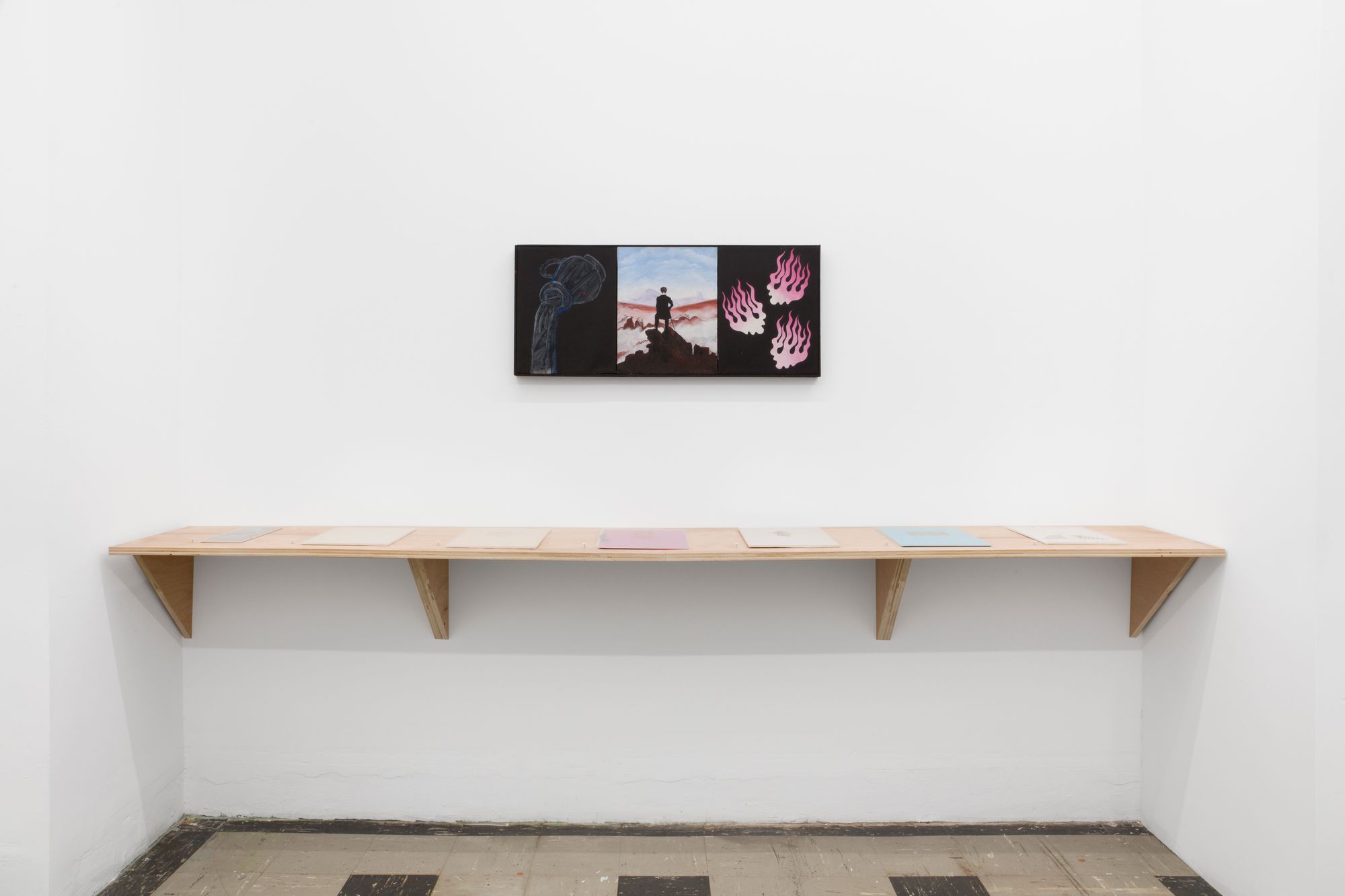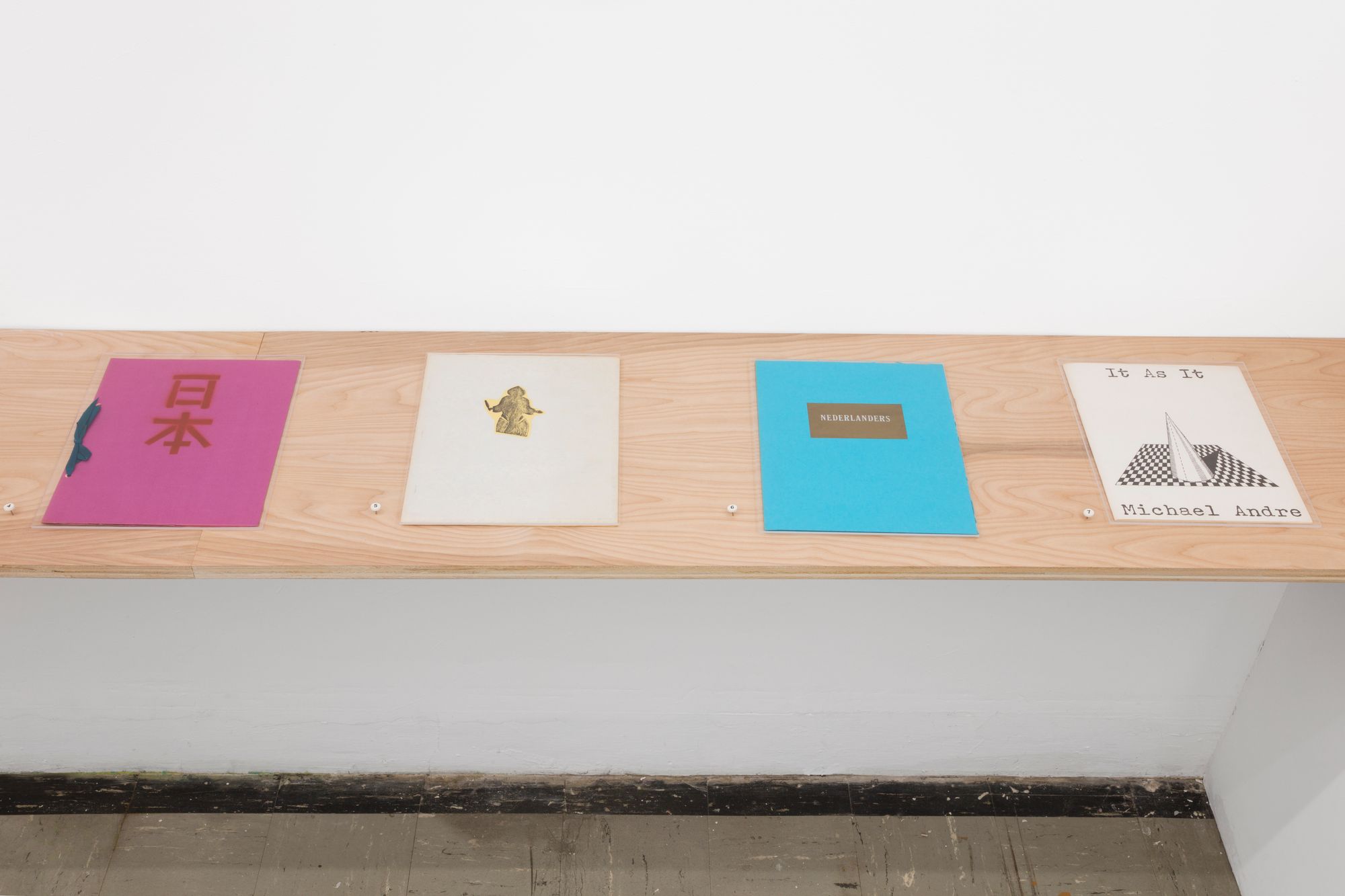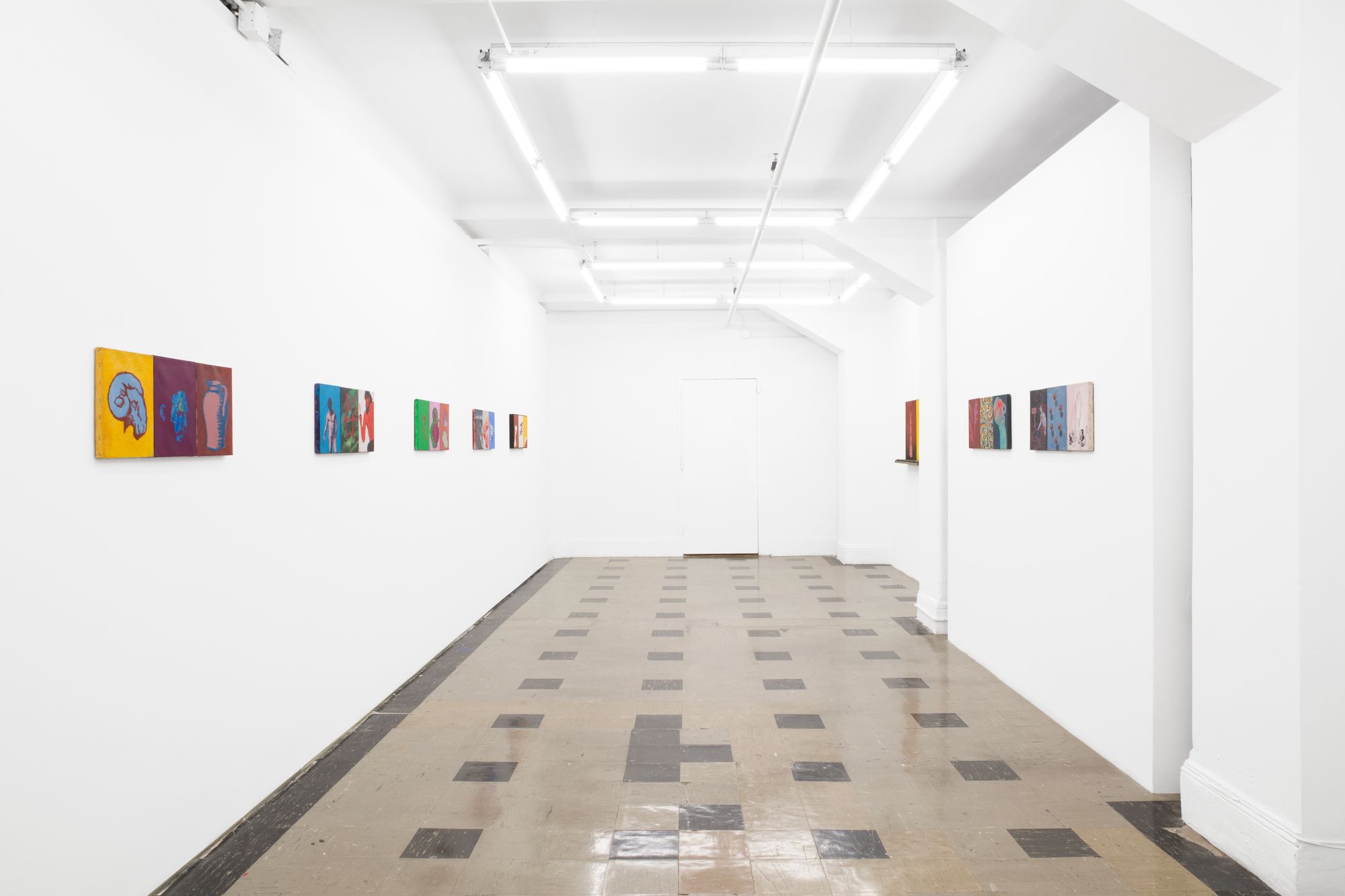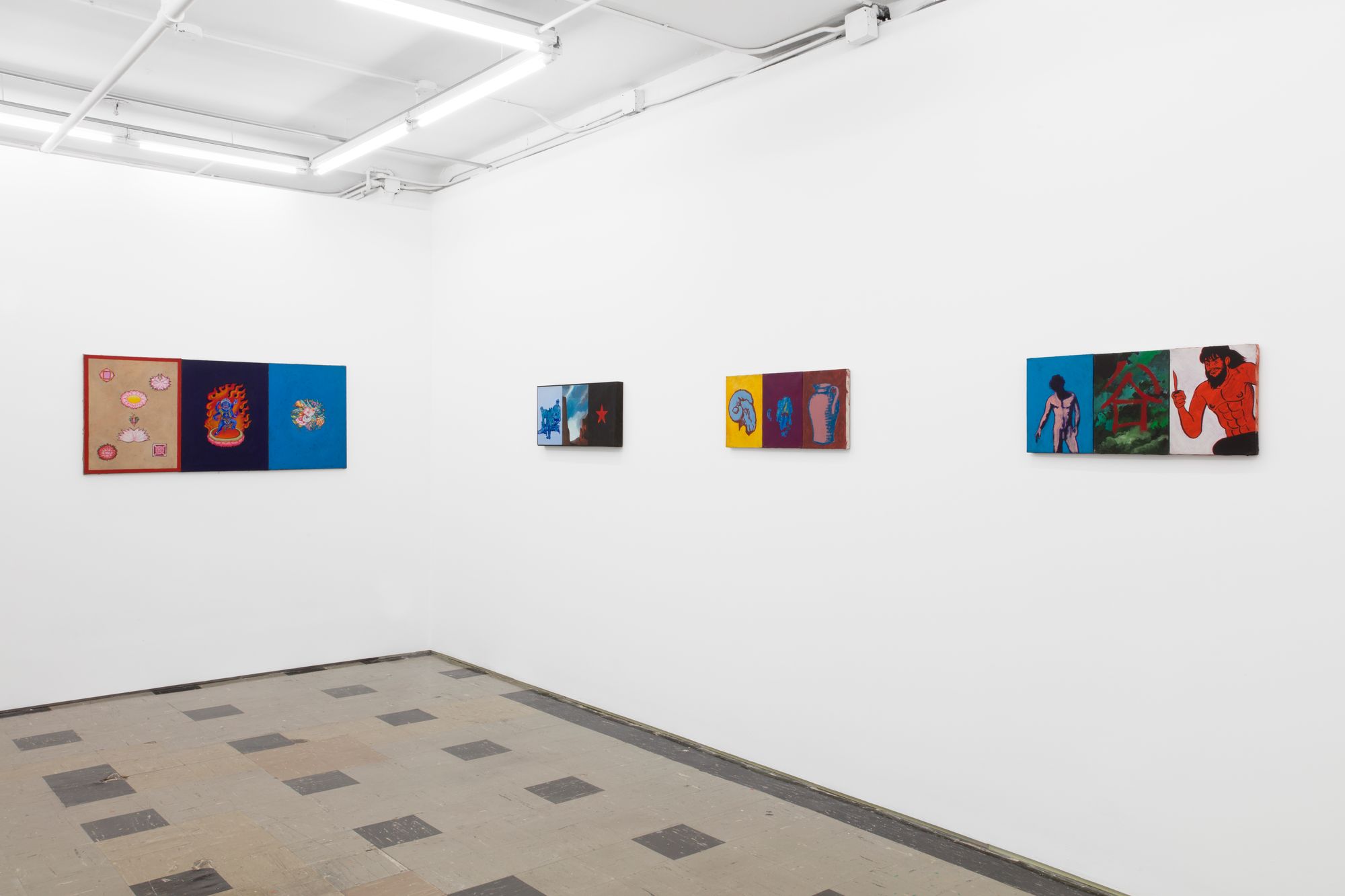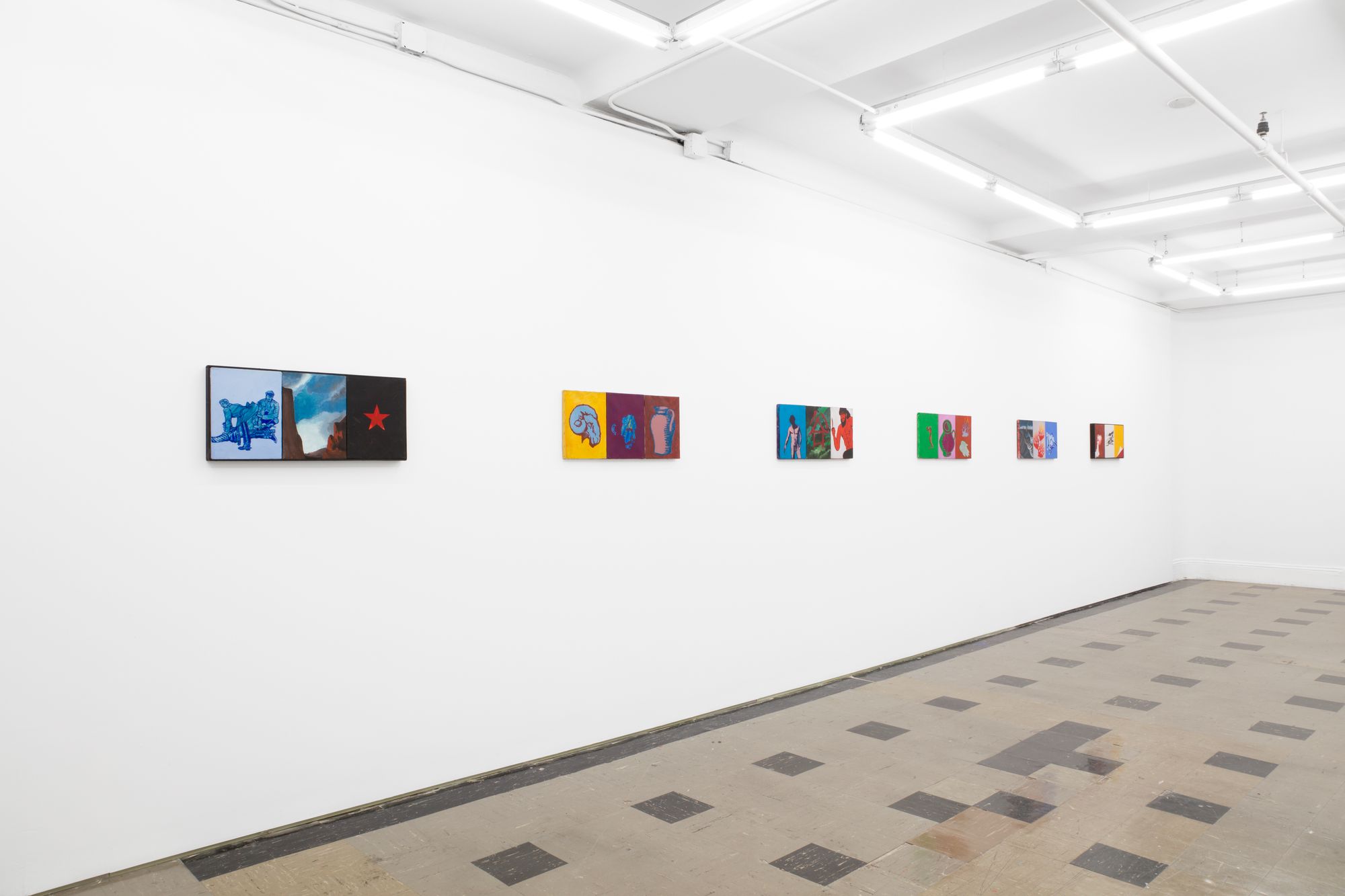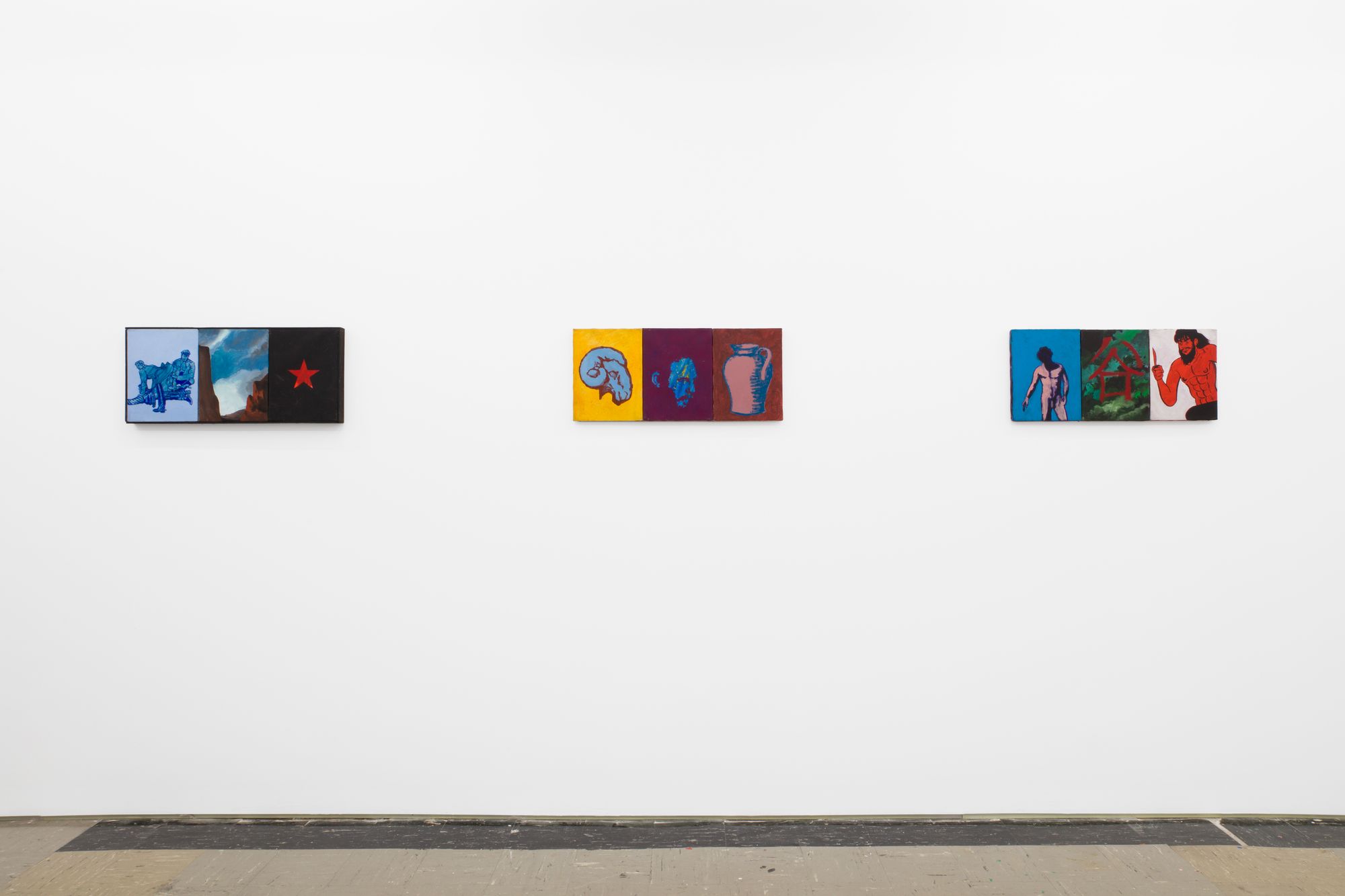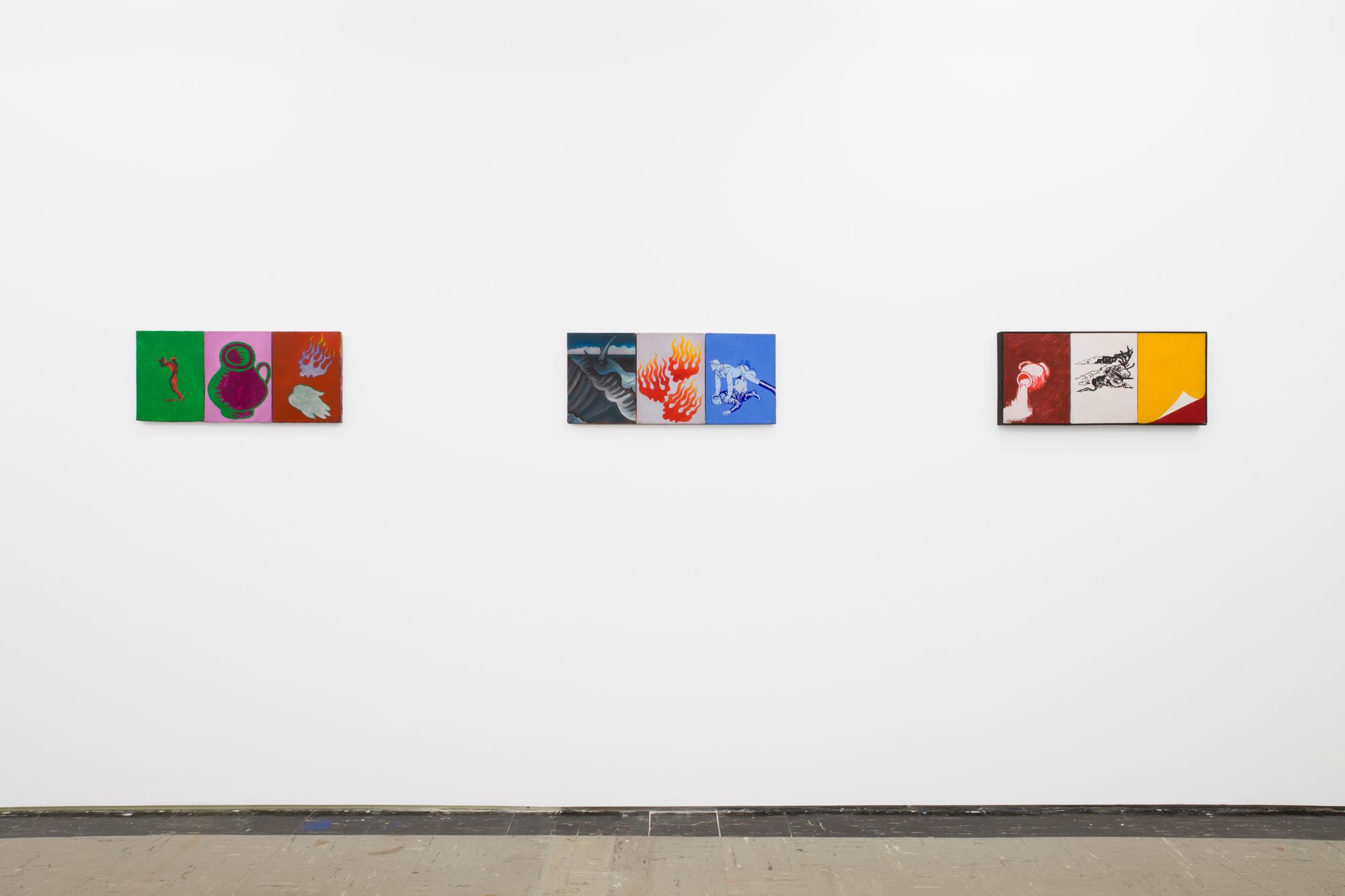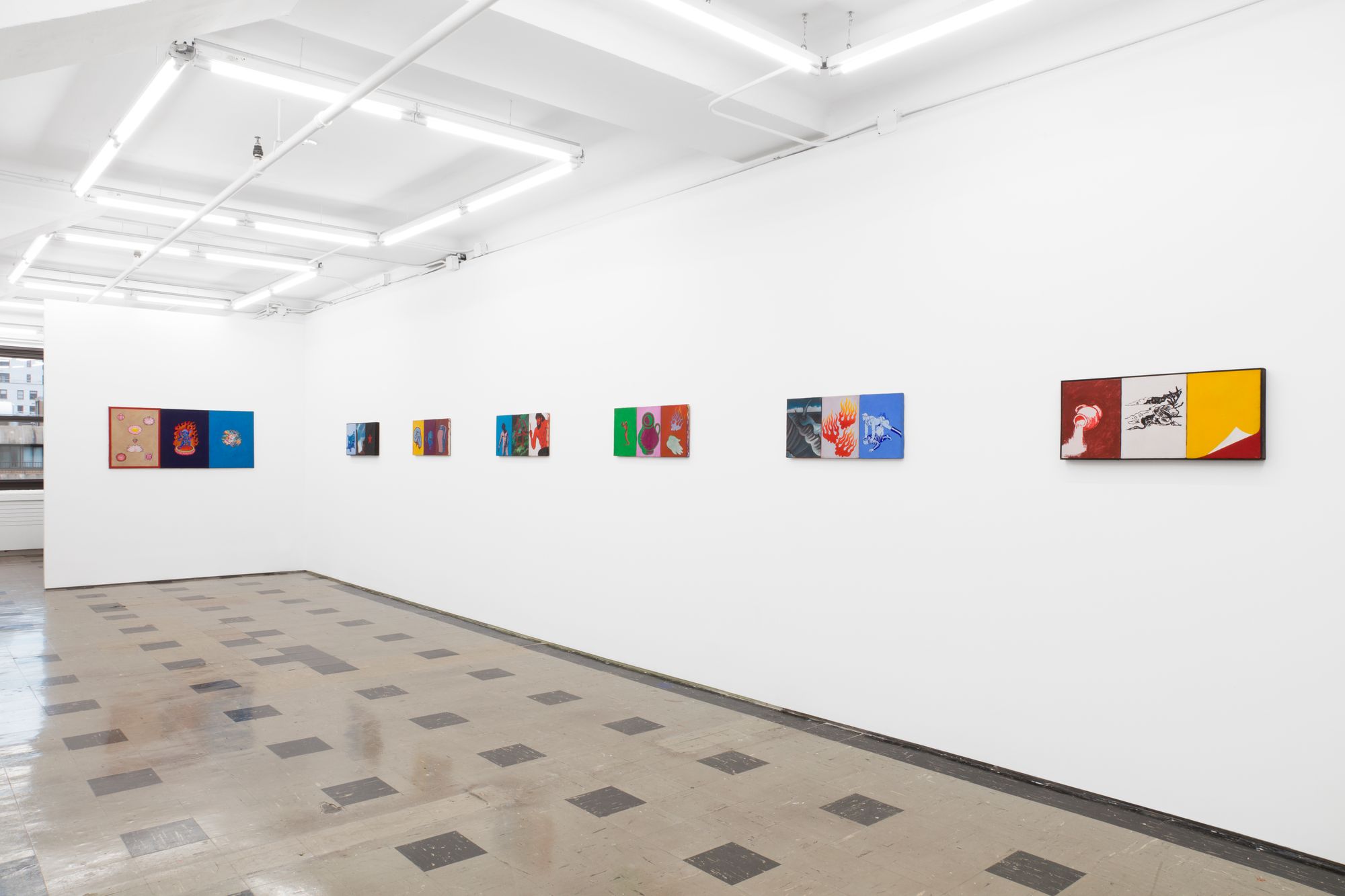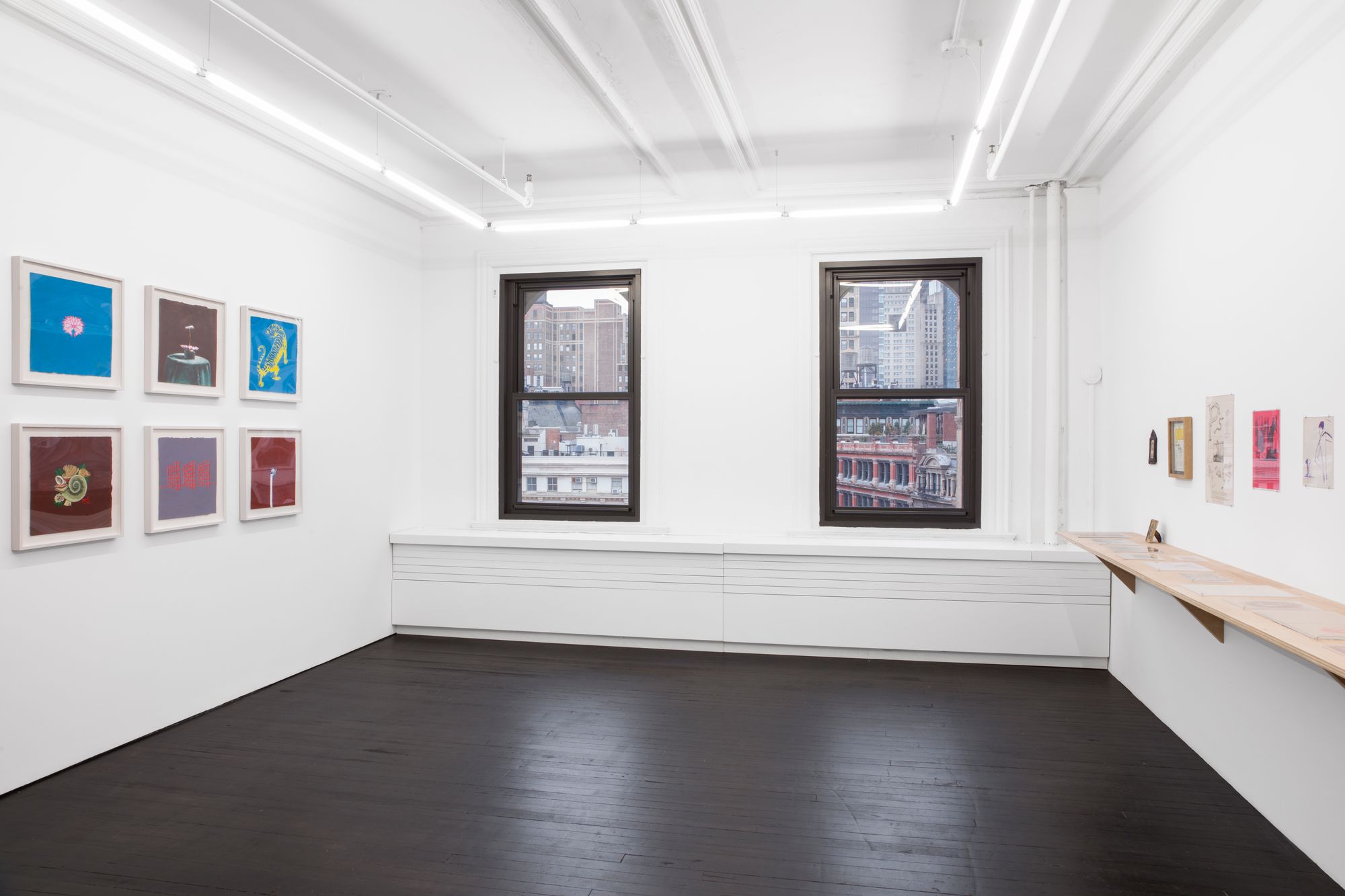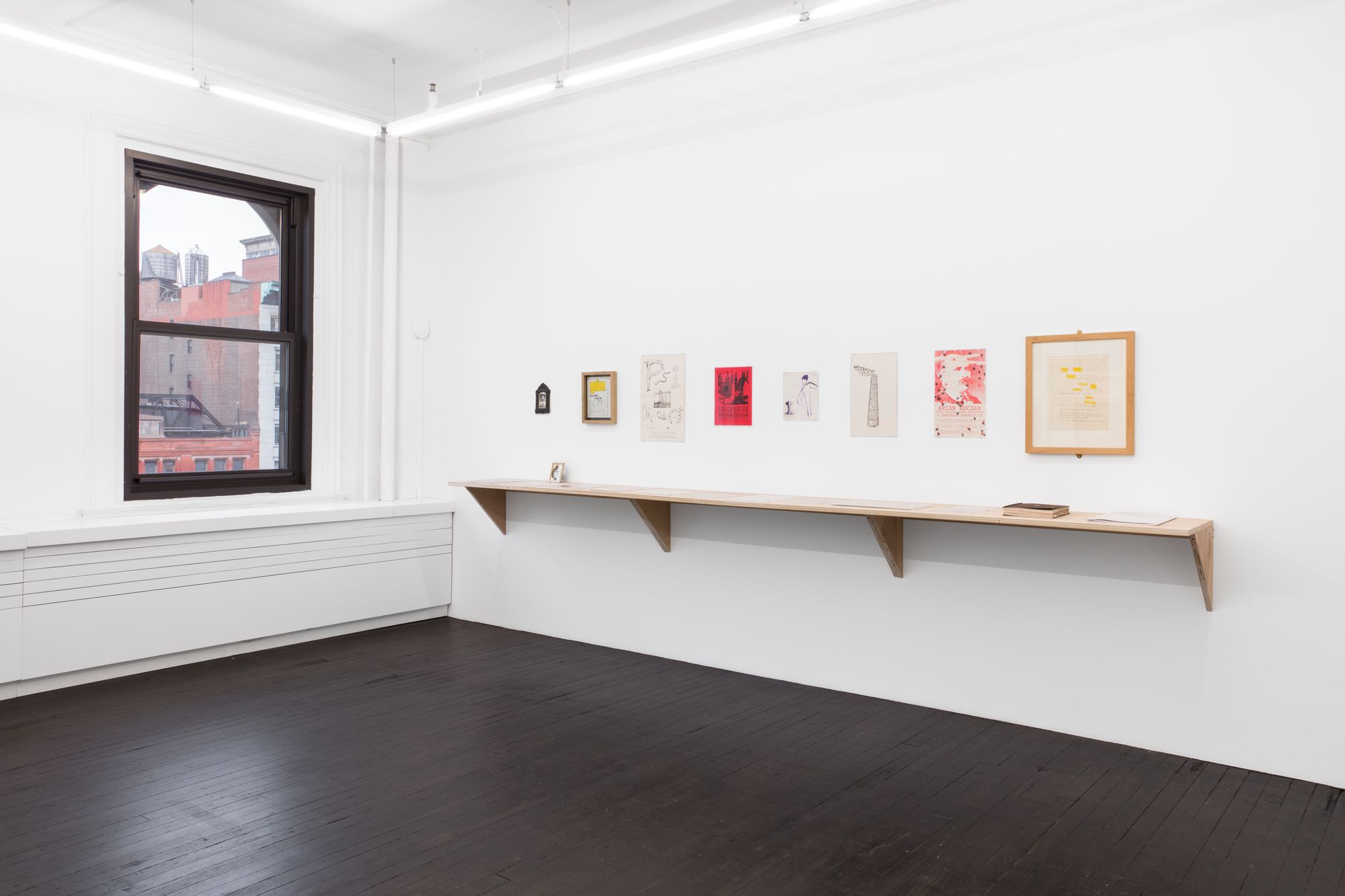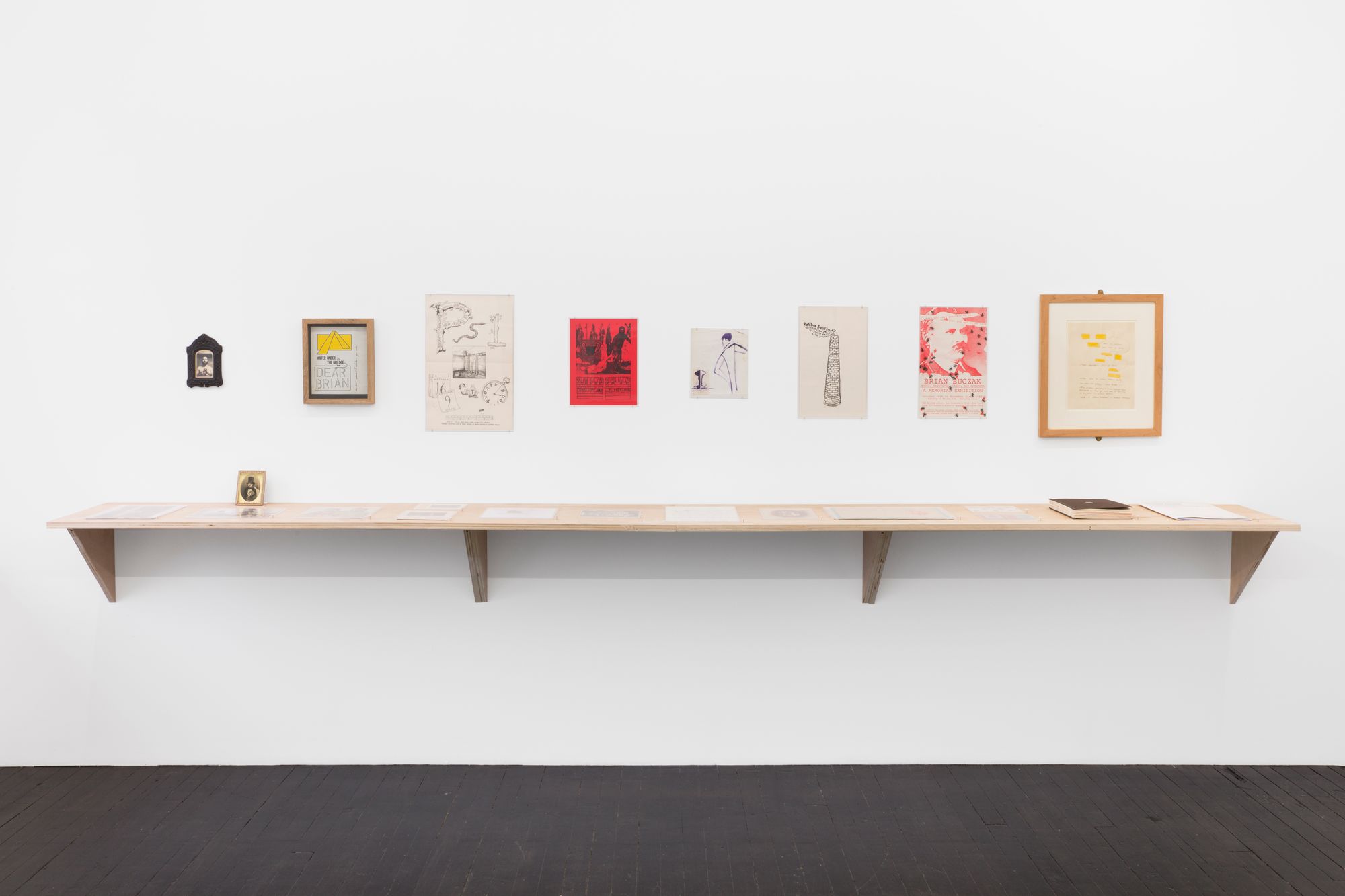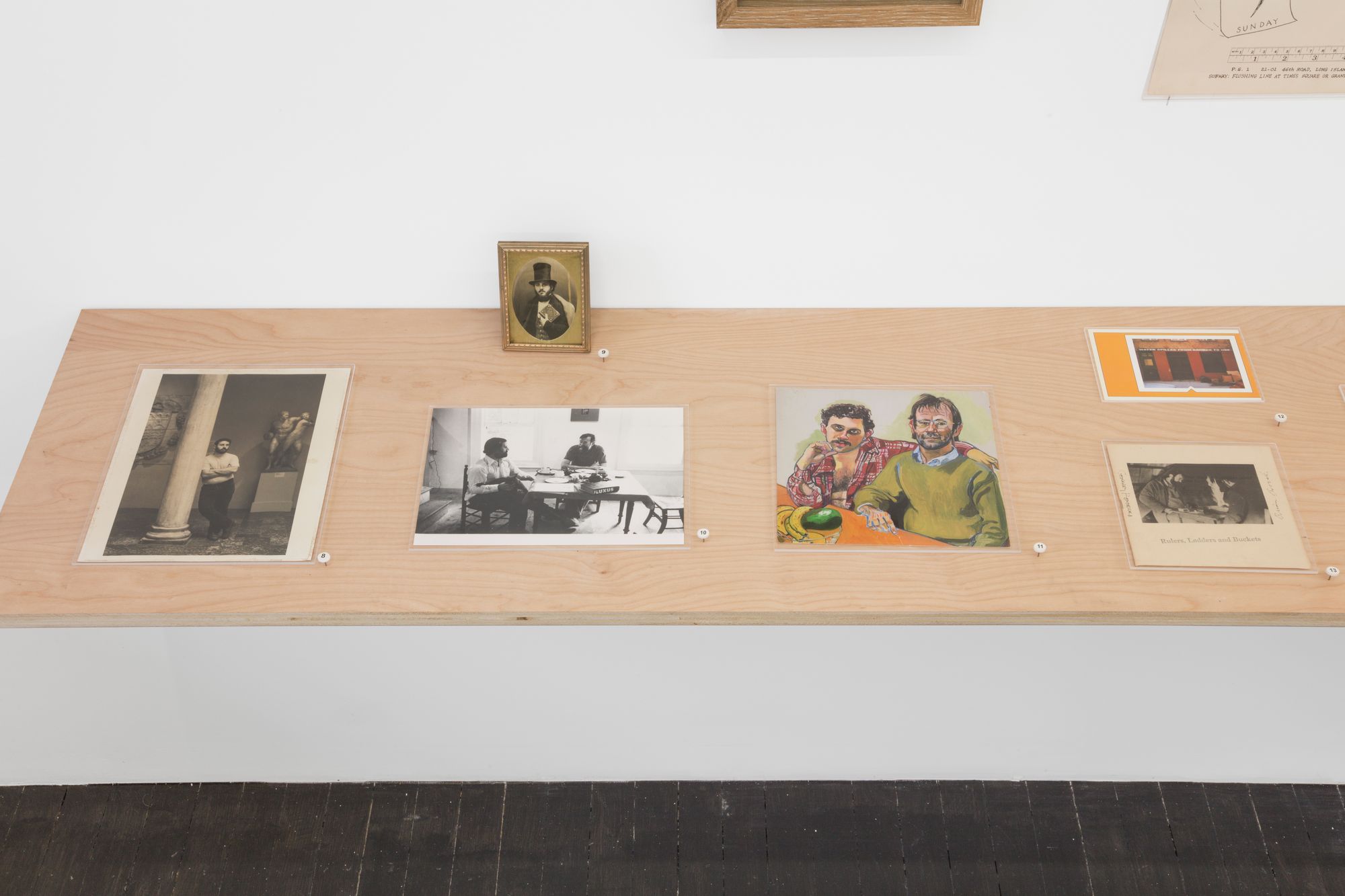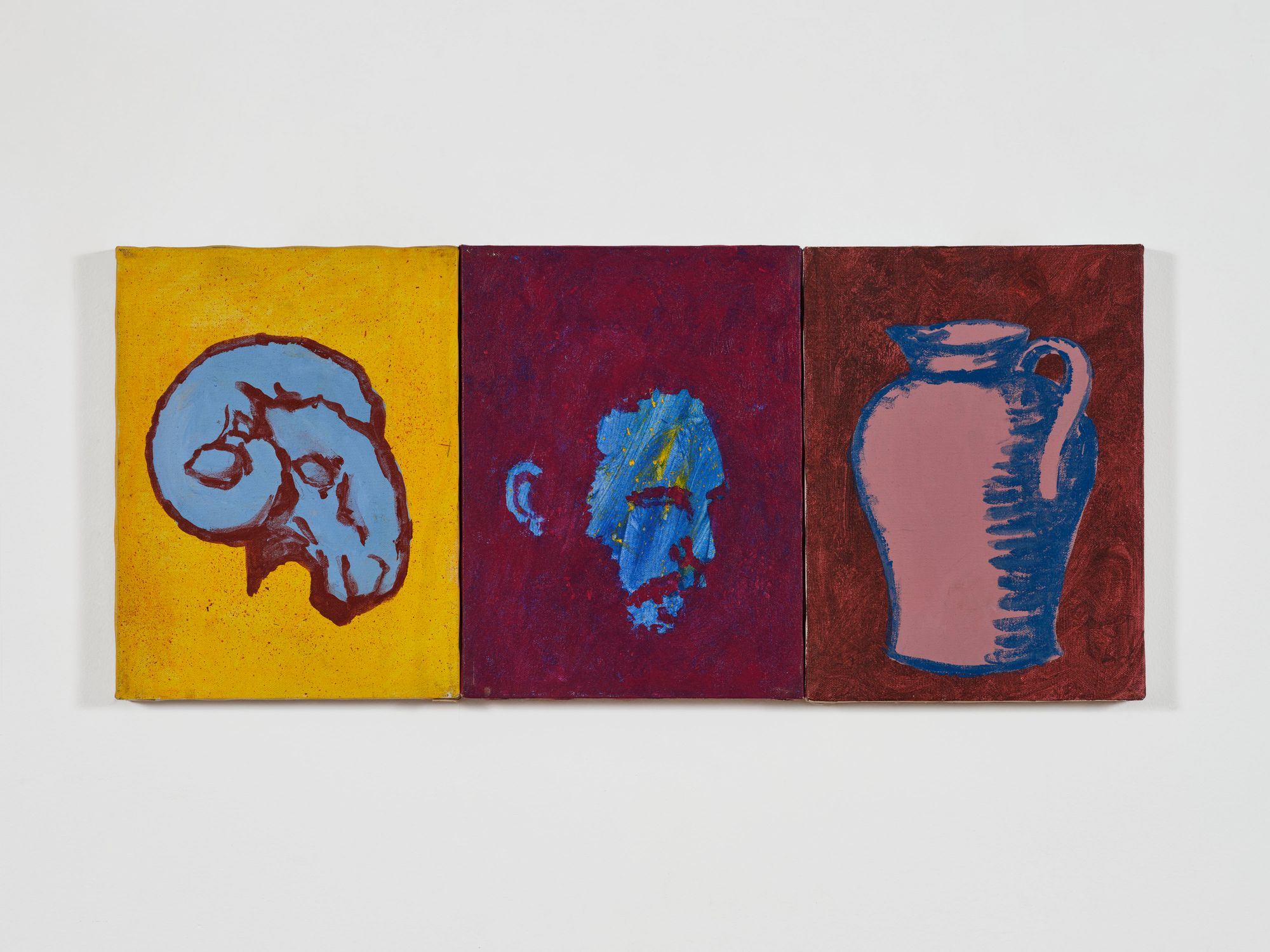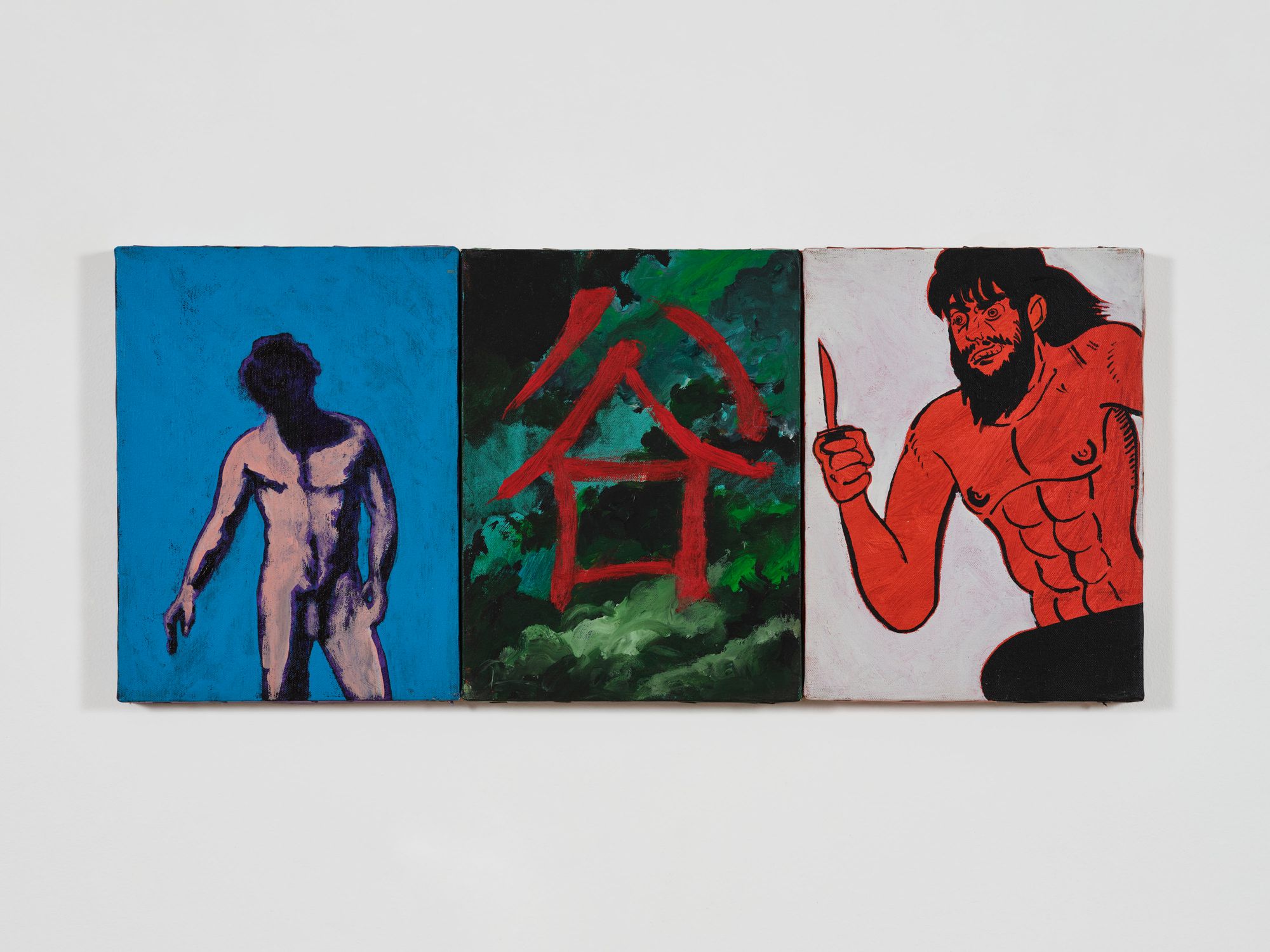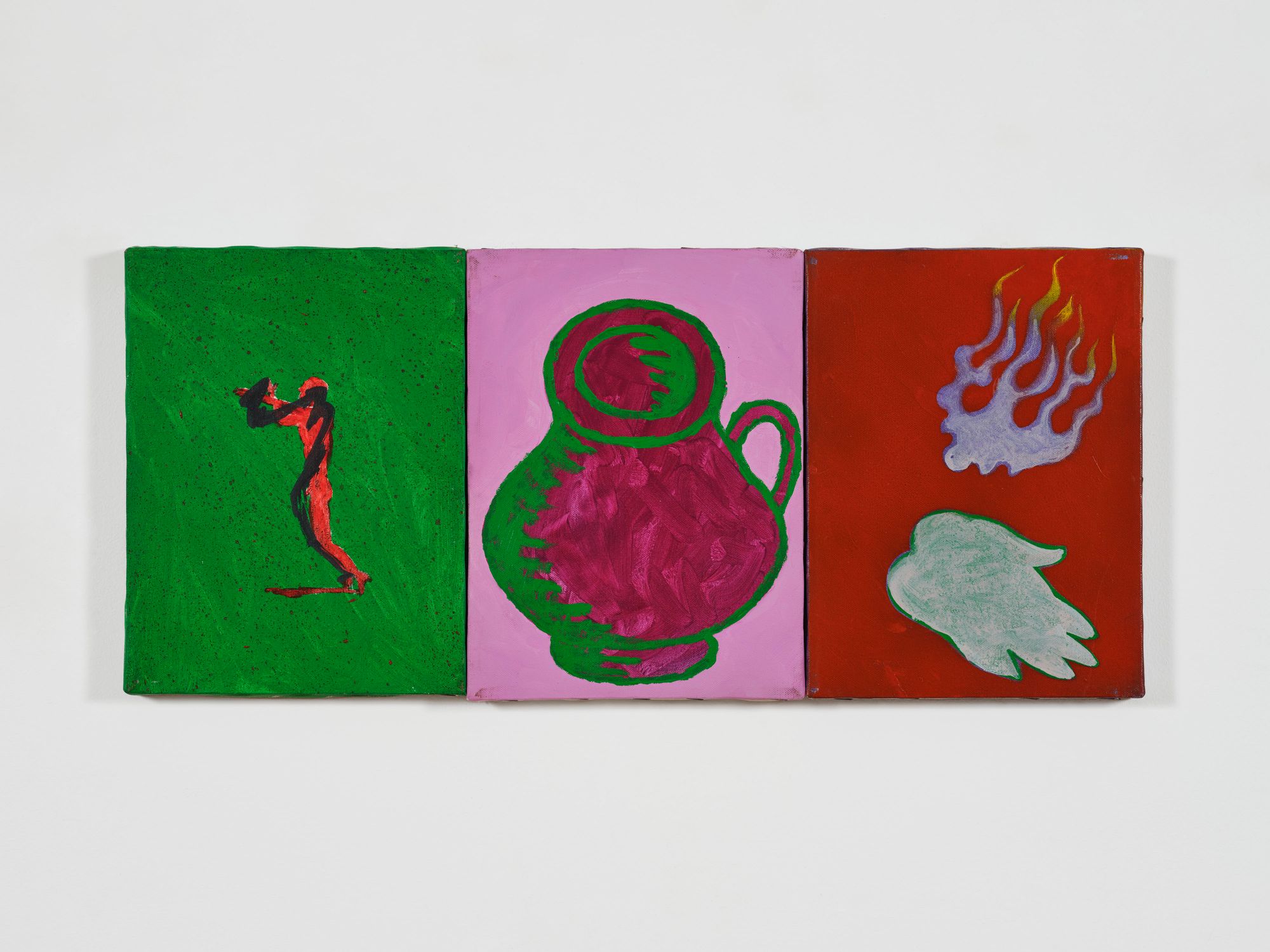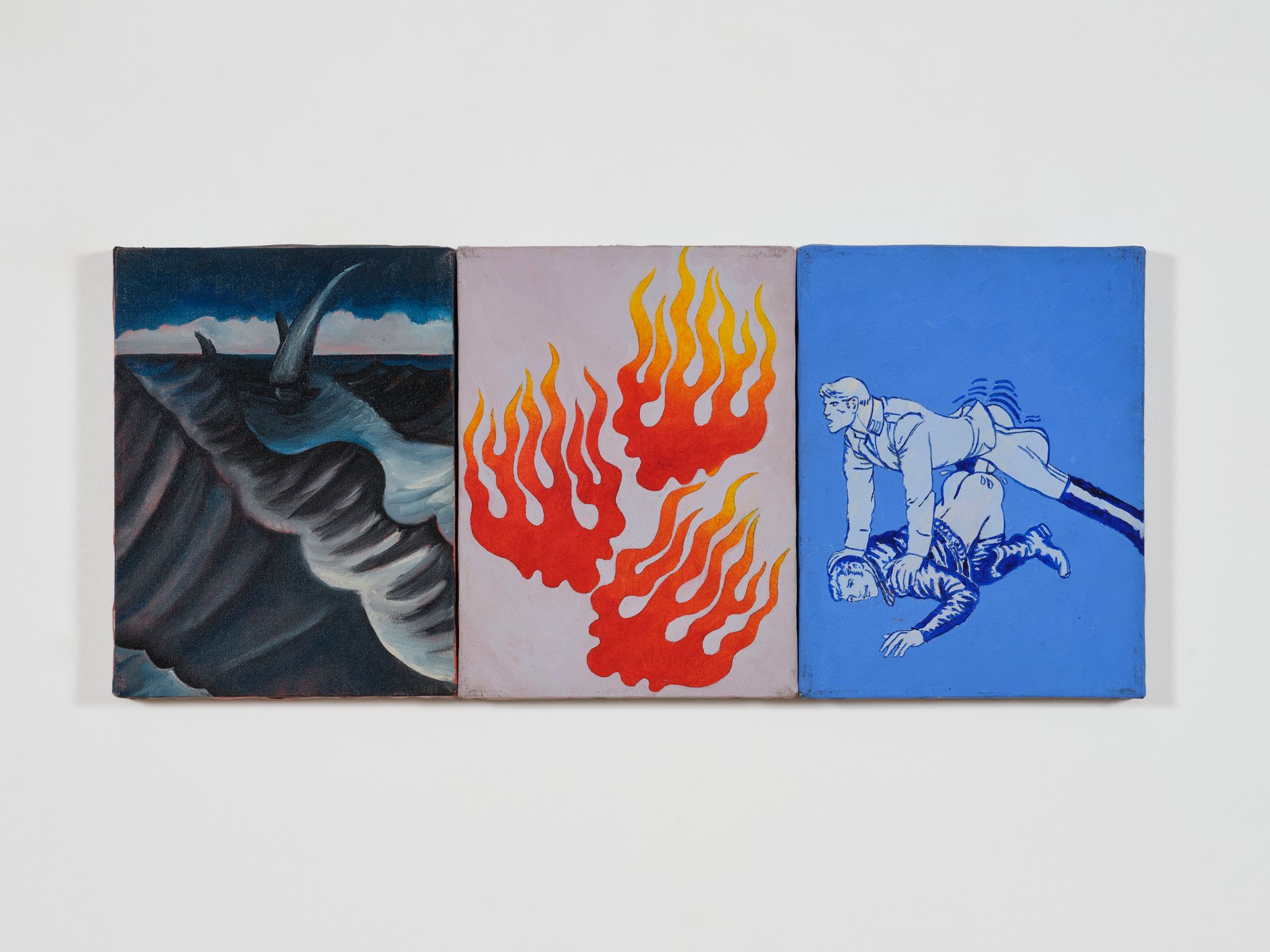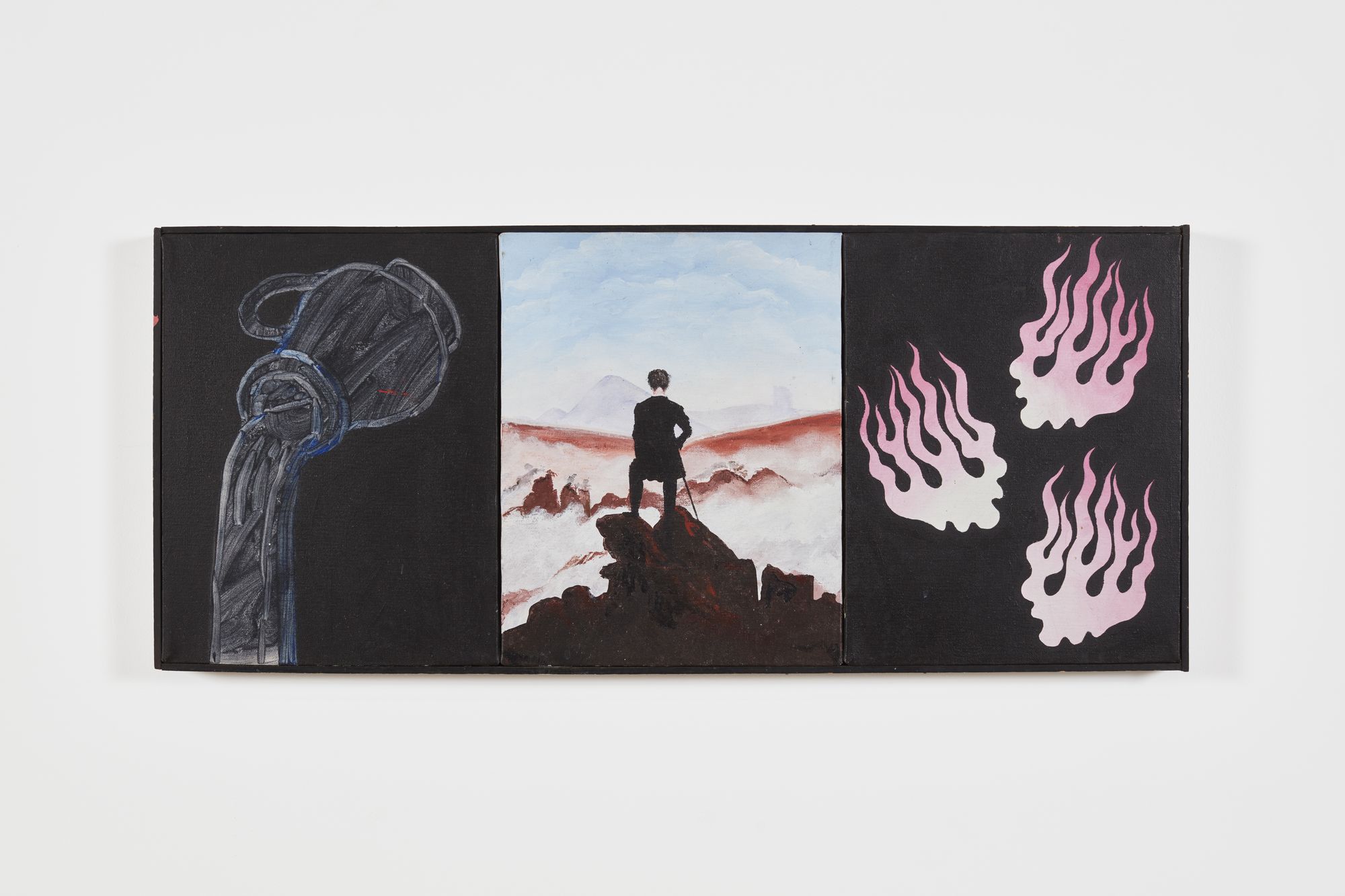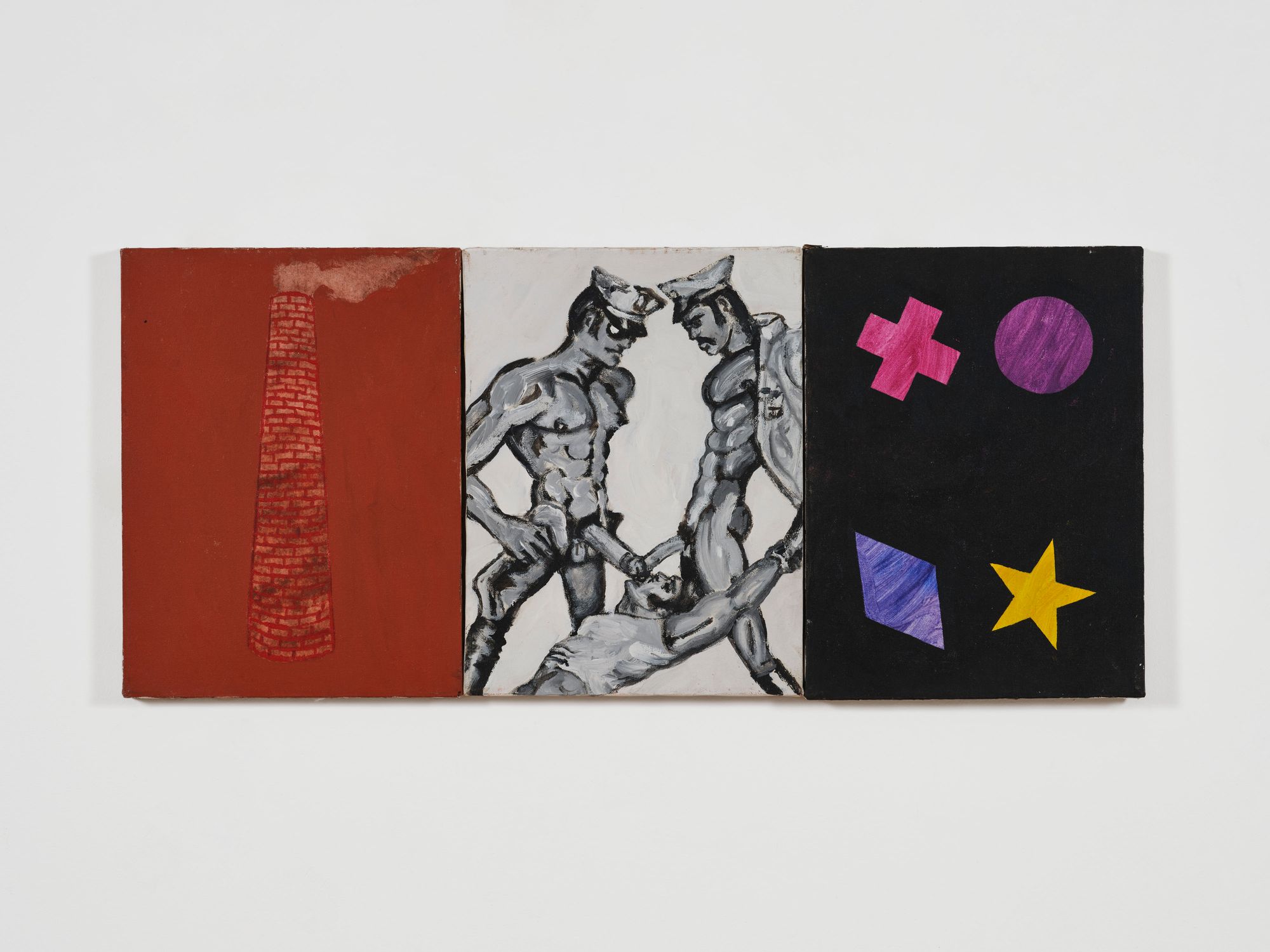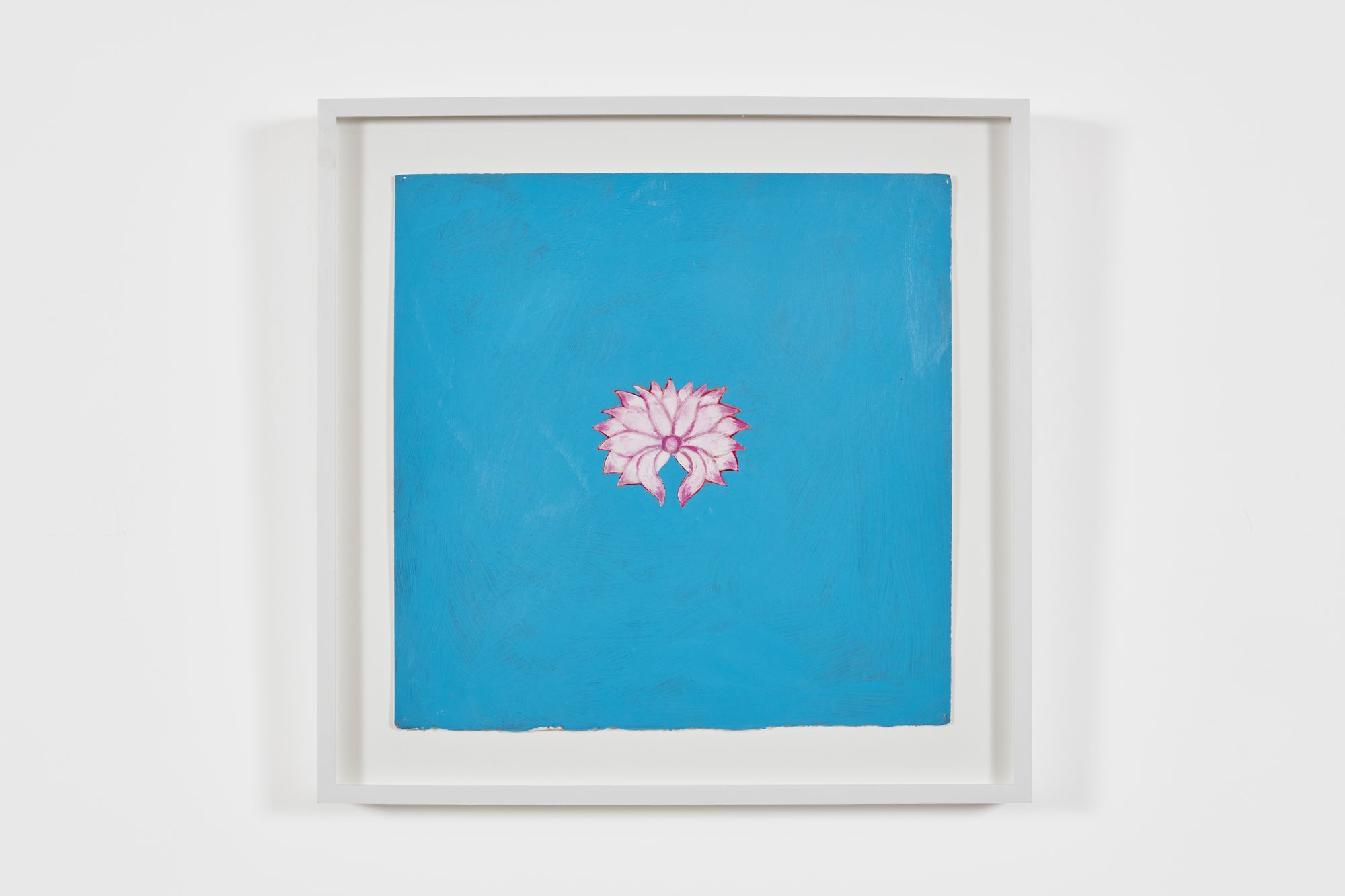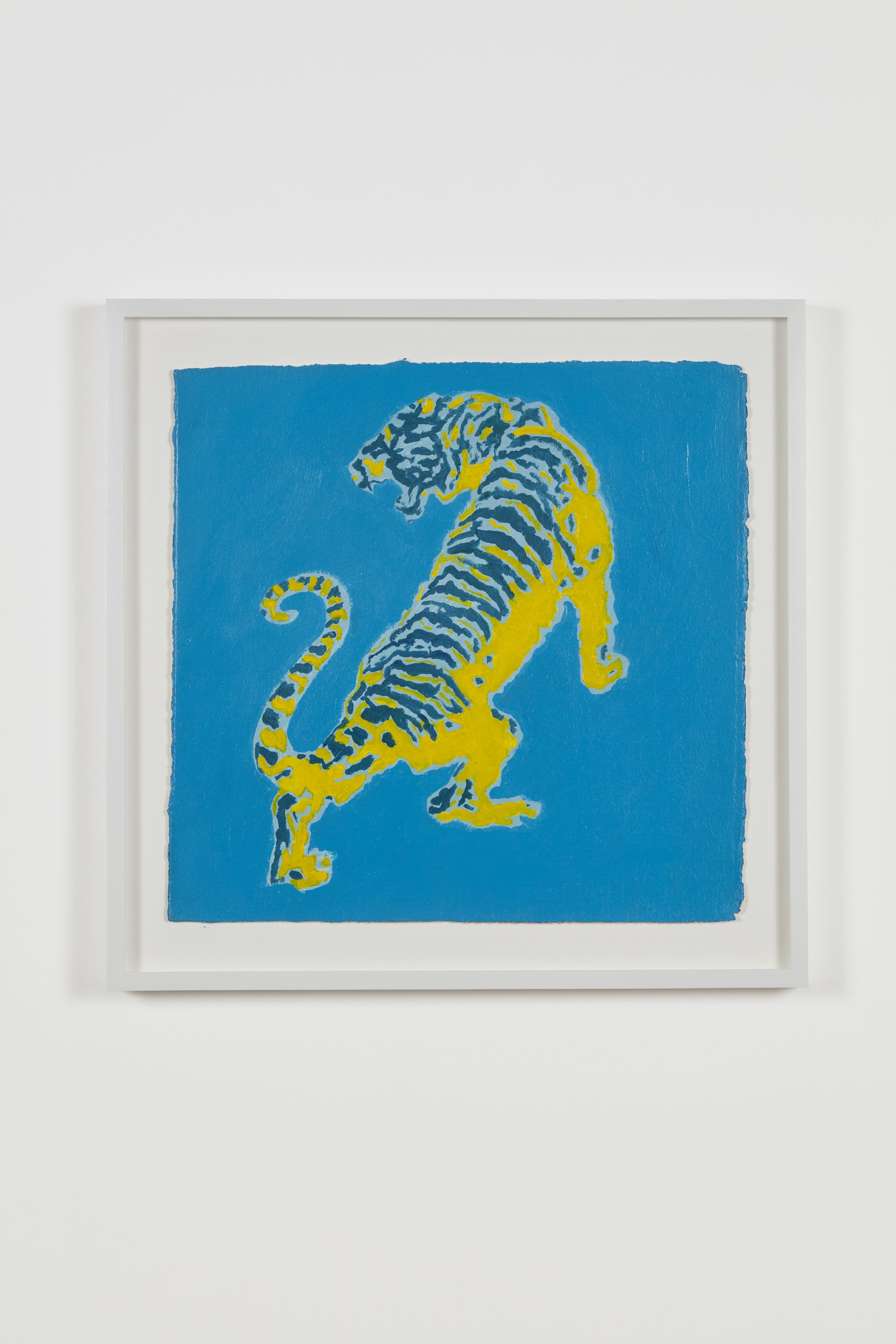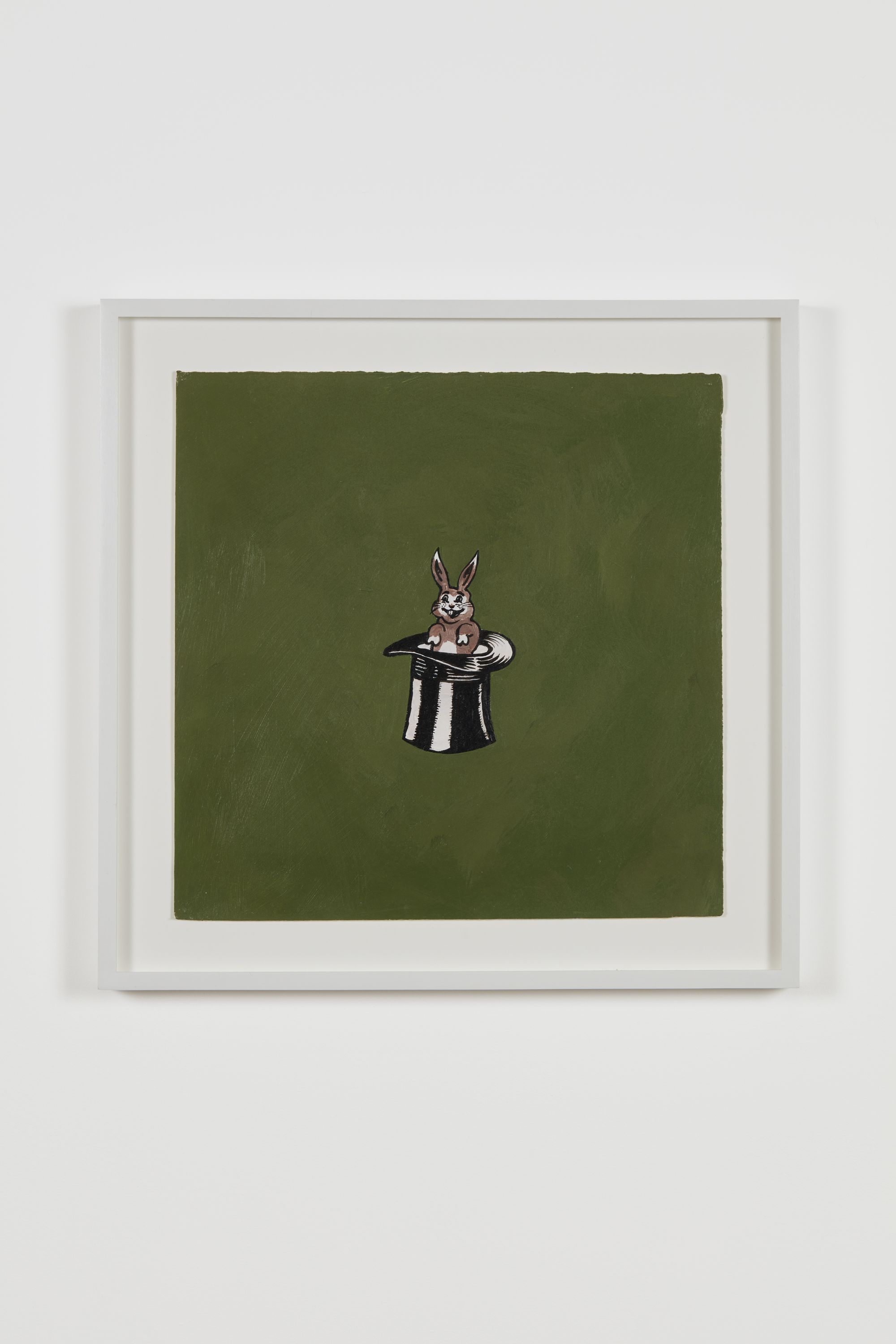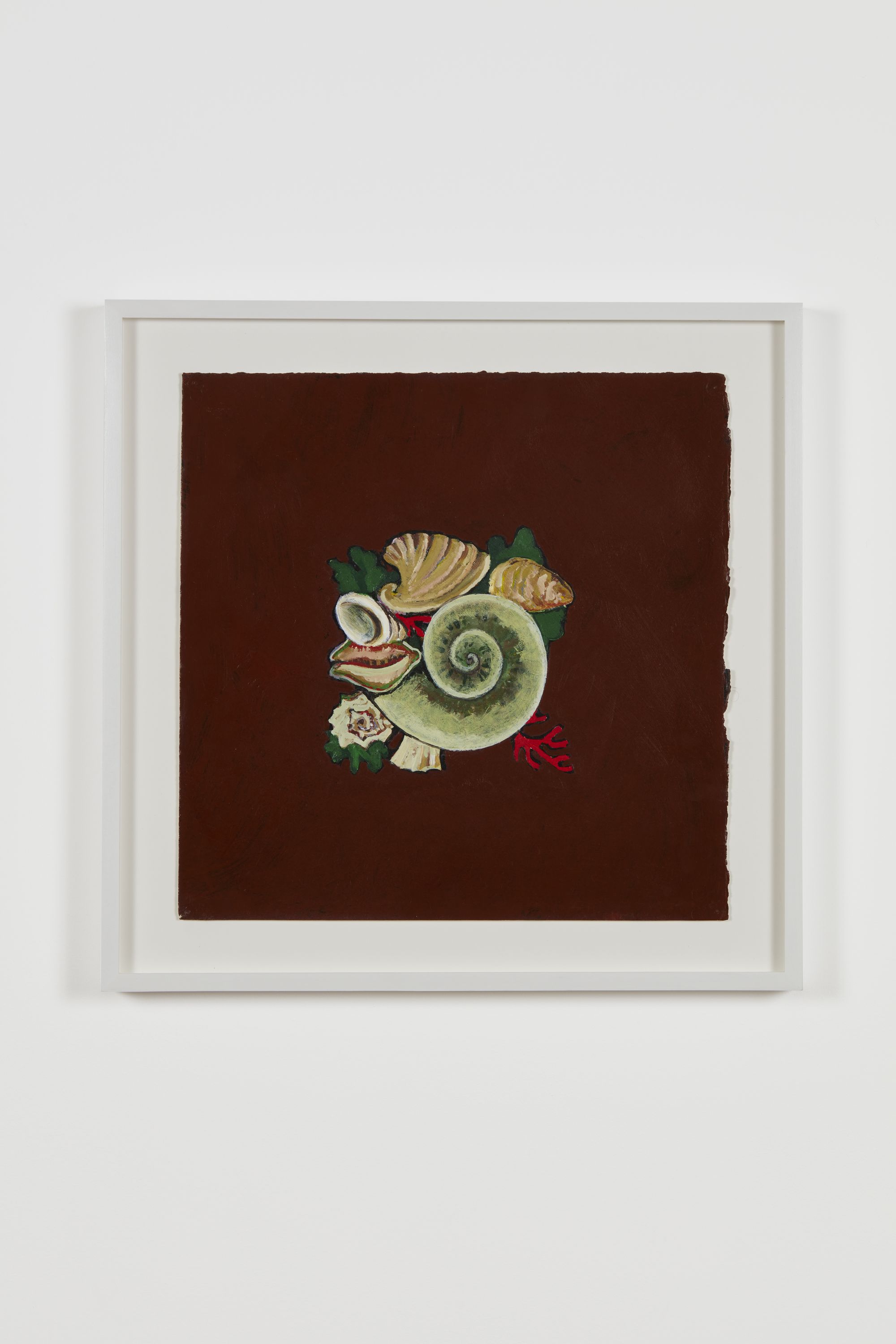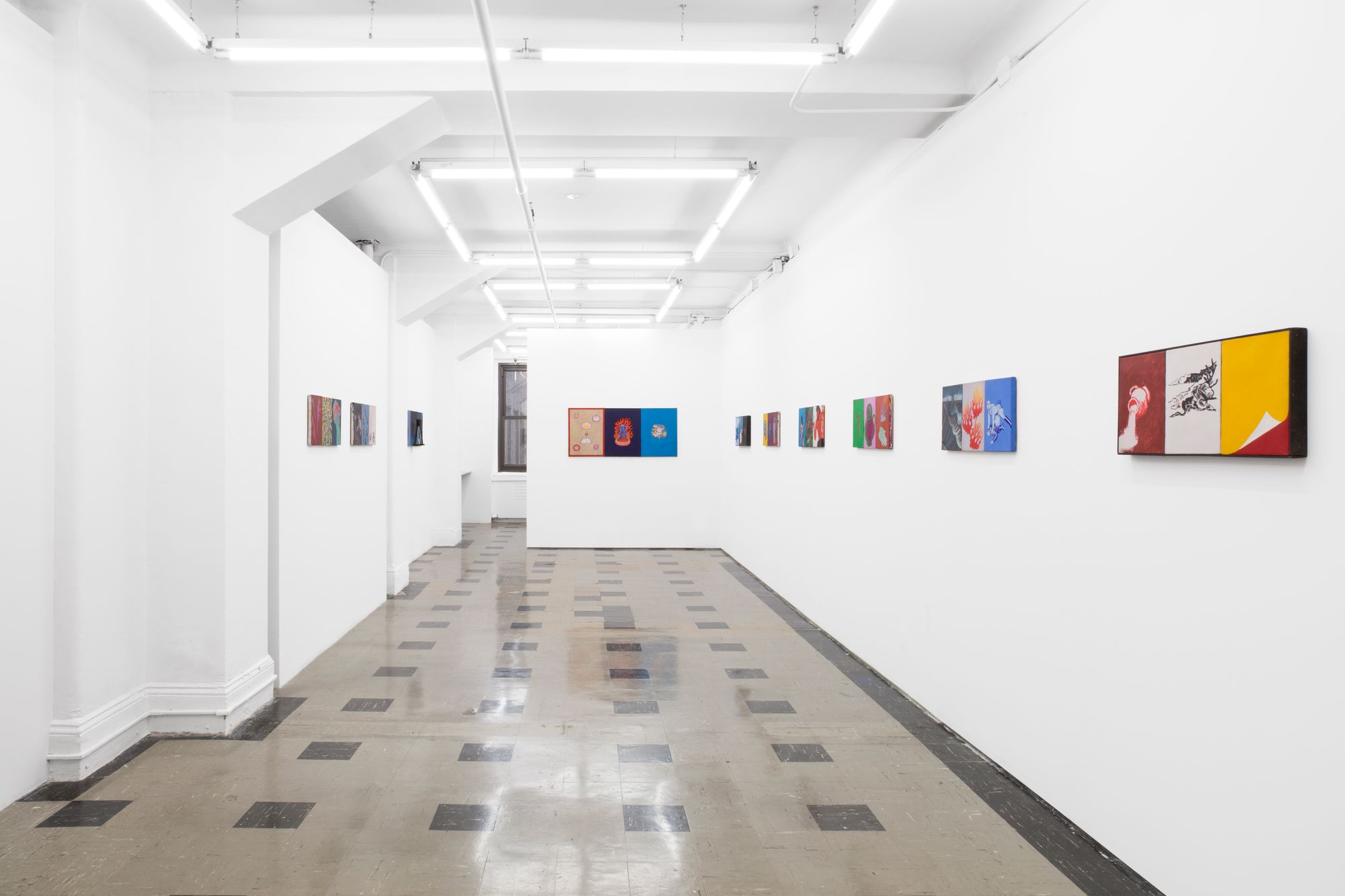
Past
Brian Buczak
Man Looks at the World
Jan. 5–Feb. 17, 2024
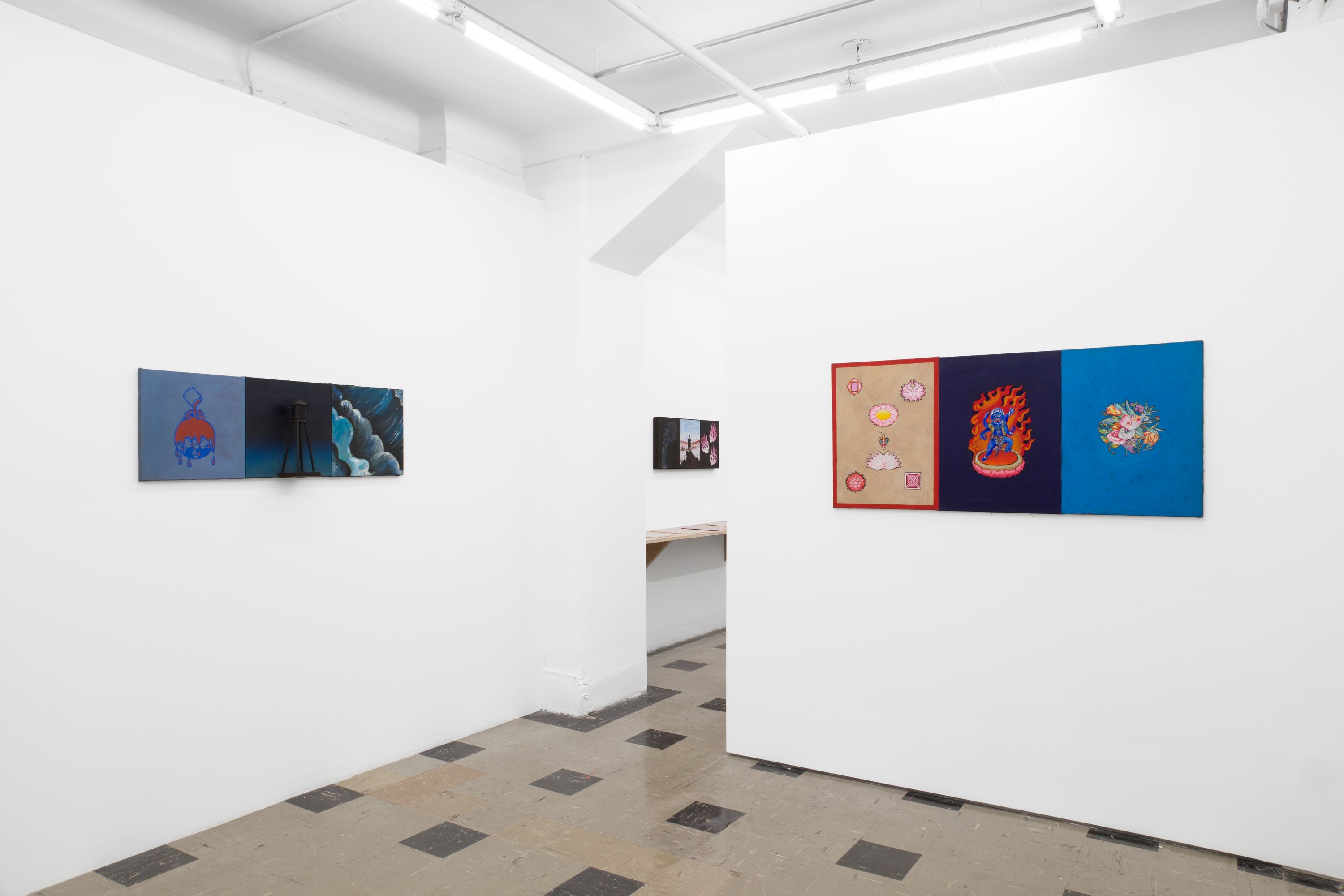
Gordon Robichaux and Ortuzar Projects are pleased to present Man Looks at the World, a solo exhibition of paintings, works on paper, and artist books by Brian Buczak (1954–87). Unfolding across both galleries’ locations, it is the artist’s first solo exhibition since 1989, following his untimely death from AIDS-related complications. Experimenting with appropriated pictures and poetic syntax, Buczak employed a variety of painting styles, reinterpreting childhood textbook illustrations, nineteenth-century academic painting, corporate logos, pornography, news media, and other found imagery to create a symbolic iconography that was, in his words, a “search for accidental significance.”
Motivated by his close correspondence and friendship with Ray Johnson, Buczak relocated to New York in 1976 from Detroit. He quickly befriended a largely older generation of artists involved in conceptual art, performance, and Fluxus, including Lawrence Weiner, Alison Knowles, Dick Higgins, Phillip Glass, and Geoffrey Hendricks, as well as elders Alice Neel and Louise Bourgeois, among others. Soon after meeting, Buczak formed a creative and romantic partnership with Hendricks that extended through the end of the younger artist’s life, leading to collaborations that spanned performance, assemblage, and the establishment of Money for Food Press. A small imprint headquartered out of their shared home–an 1820s townhouse that the couple painstakingly restored–the press published small edition artists books, through which Buczak cultivated a DIY sensibility and affinity for the juxtapositions created between pages. Concurrently, Buczak began using hand-cut stencils to create a lexicon of simplified forms that he would paint on storefront windows and in abandoned buildings across the city, spanning Buddhist flames and chalices, Masonic symbols and Greco-Roman figures. This repertoire also appeared repeatedly in his canvas works from the early 80s, in which he rhymes a diverse set of archetypal images across diptych and triptych compositions, as well as serial works on paper that mimic his experimental publications.
Hendricks has attributed the development of Buczak’s visual logic to his encounter with Rebus puzzles during the couple’s visit to Italy in the summer of 1977. These puzzles interweave illustrated pictures and individual letters to represent words or phrases, offering a key for how Buczak combinations of images were intended to manifest meaning greater than the sum of their parts. In the writing of longtime friend, artist Brad Melamed:
Painting appropriated imagery was Buczak’s means of subverting what was already understood to be a mediated simulacrum of information. Like many of his peers in the eighties art scene, Buczak’s work was both cultural critique and an exploration of the politics of identity, but he expands his concerns into the metaphysical. He links his queerness with a notion of a multi-dimensional self …. For him the sacred and profane were to be uncategorized. Set free of their separation, Buzcak’s work opens the door to multiple readings that link pleasure and pain, knowledge and innocence, life and death: the phenomenological wonders of this world and beyond.
Not unlike work by his Pictures Generation contemporaries, Buczak also employed cinematic devices such as close-ups, montage, and splicing, as well as the art historical references and formal eclecticism of Neo-Expressionism. In Broken Glass (Science Project Series) (1986–87), Buczak paints an image of a glass bottle being smashed by a hammer alongside a scene of a young boy swimming in water, creating a situation in which the feeling of jumping into cold water is formally and psychologically mirrored by the shattering glass. In the triptych Untitled (Martin Luther King) (1985), he combines an impassioned image of Martin Luther King, a world map painted the black, red, and green of the Pan-African movement, and a vibrating field of electric blue and red. Moving left to right, the viewer experiences a shift from the specificity of a particular historical figure to an abstraction that may allude to a more universal sense of fervent emotion.
Though predating his AIDS diagnosis in 1986 and subsequent declining health, towards the end of his life Buczak began to focus on metaphysical subjects, including séances, ephemeral natural phenomenon, and ghostly landscapes, or what Hendricks refers to as the “spirit world.” Untitled (Phases of the Moon) (1986) portrays moment of astrological alignments between the sun, earth, and moon across four canvases, each linked to a corresponding season. In Buczak’s 1985 diptych Materialization, a group of figures sit in a circle, with one figures’ body repeating, as if through a glitch, across the canvases’ divide. This disjunction realizes a psychic orientation of pictorial space, suggesting the coexistence of the figure’s spirit in one dimension and the materialized body in another. This dislocation and formal distortion is often exaggerated by Buczak though his characteristic use of the vertical split in the diptych’s composition, a technique achieved by projecting images onto multiple canvases that–as explained by fellow artist friend and co-worker Andrea Evans–was inspired by his day job working on large scale industrial slide shows. In a rare description of his own work, Buczak speaks to the psychic dimension inherent to his process, stating, “my subjects appear to me in sleep, and the work is painted in a deep trance in total darkness.”
Thank you to the executors of the Geoffrey Hendricks and Brian Buczak Estate, Sur Rodney (Sur), and Hendrick’s children, Bracken and Tyche Hendricks. Since 2021, artists Andrea Evans and Brad Melamed––friends of Buczak since Detroit––have been serving as co-archivists of the artists’ legacies, providing invaluable insight into their work and life. The estates remain housed in Hendricks and Buczak’s former home, a Federal Style townhouse now celebrating its 200th anniversary. Restored by the artists from desolate condition, the Greenwich Street façade is recognizable for the Lawrence Weiner text piece that adorns its façade, which reads: “Water Spilled from Source to Use.” Buczak’s correspondence with Ray Johnson was recently acquired by Northwestern University.
Install (27)

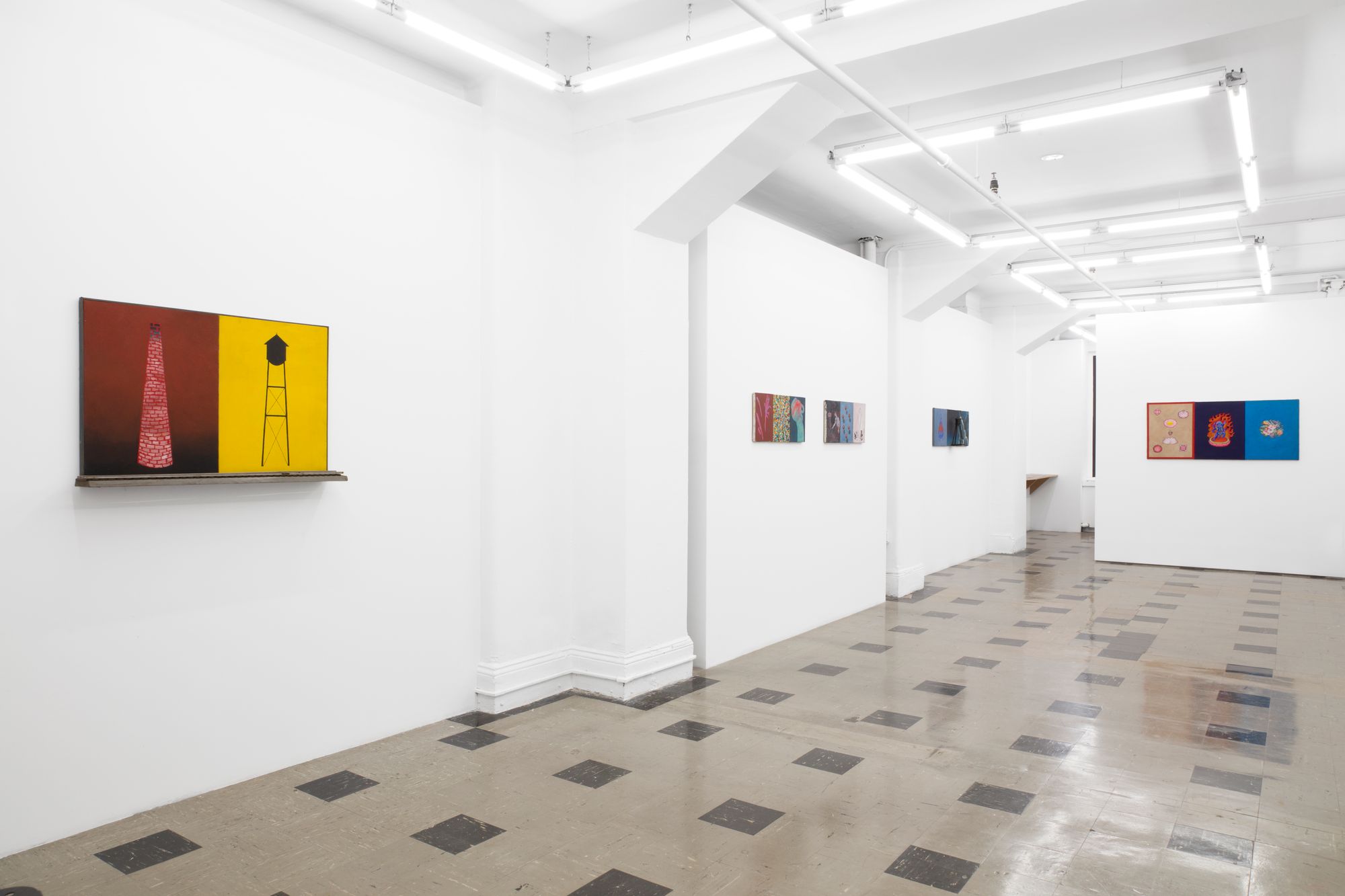
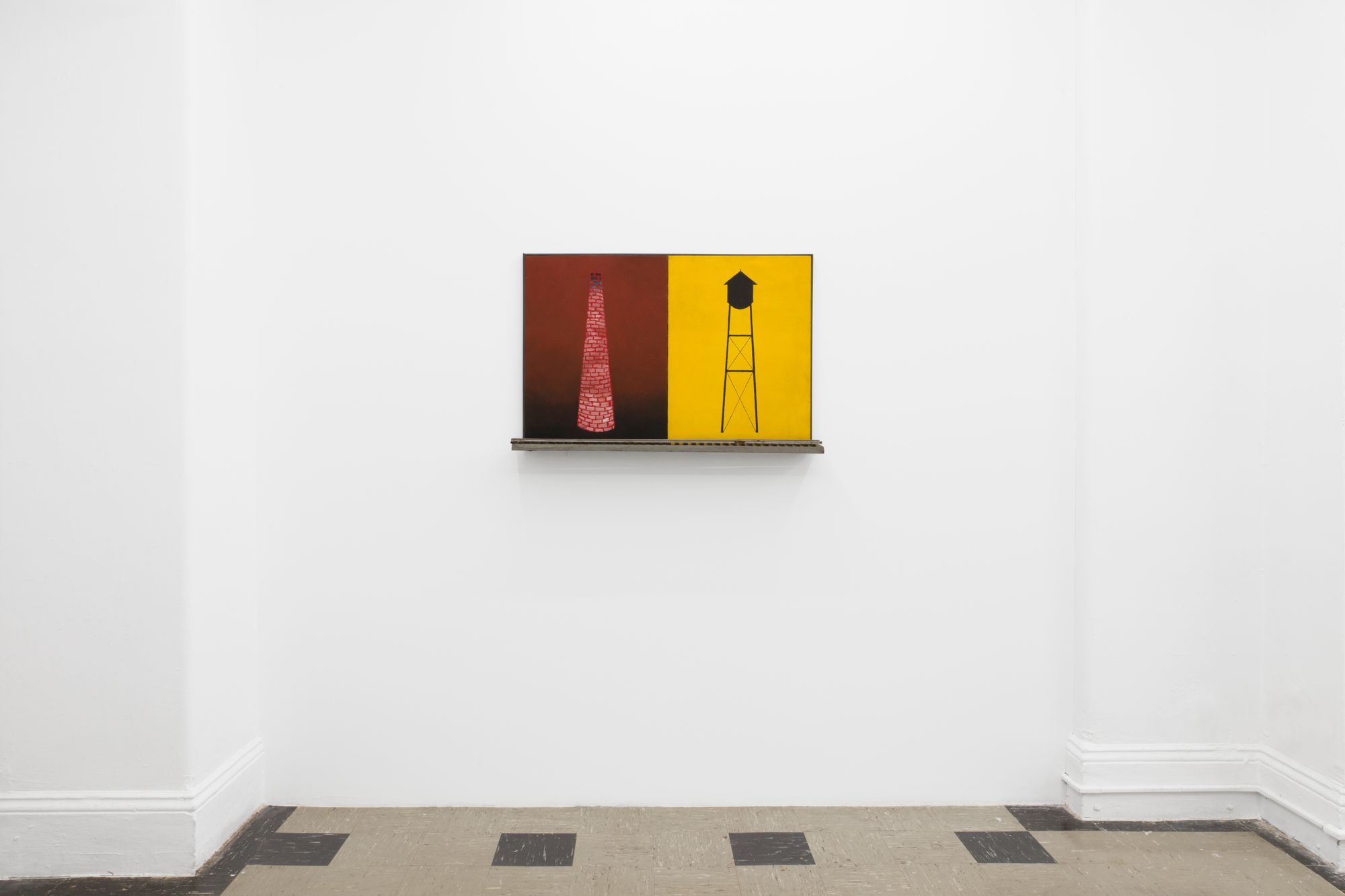

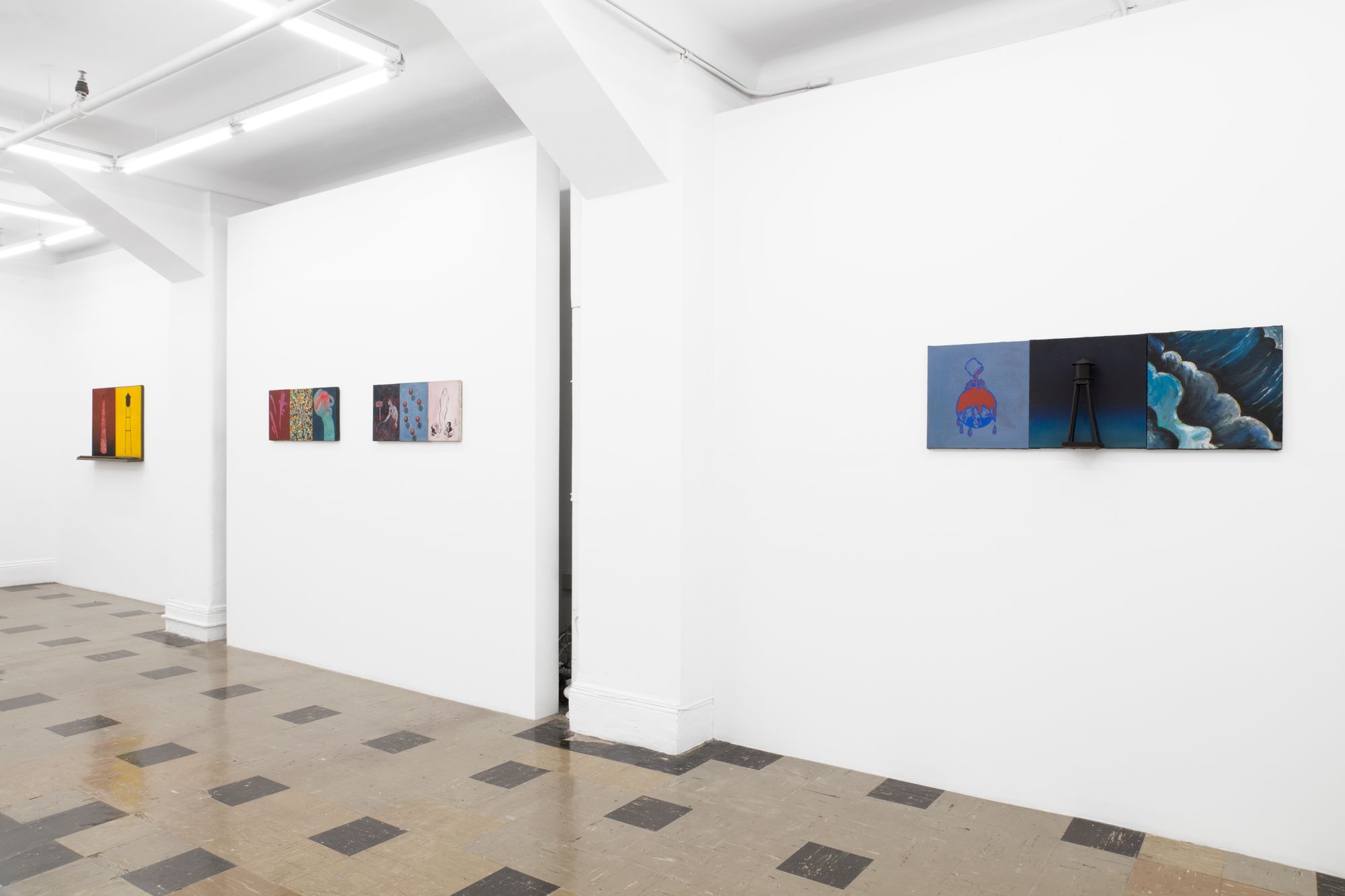
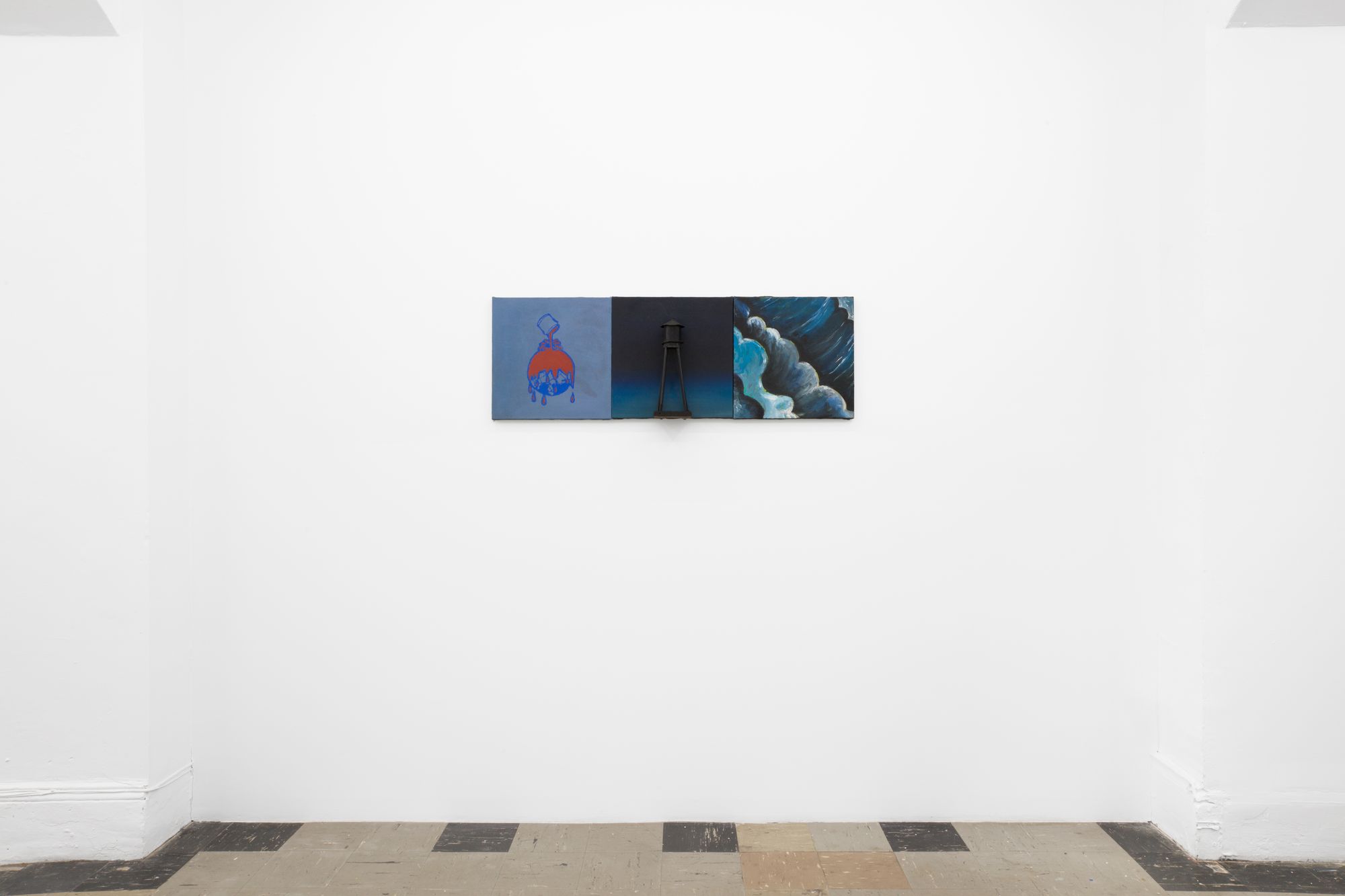
Works

Untitled (Two Towers & Train Track)
Acrylic on canvas (diptych) and found object
25 x 36 inches
1982
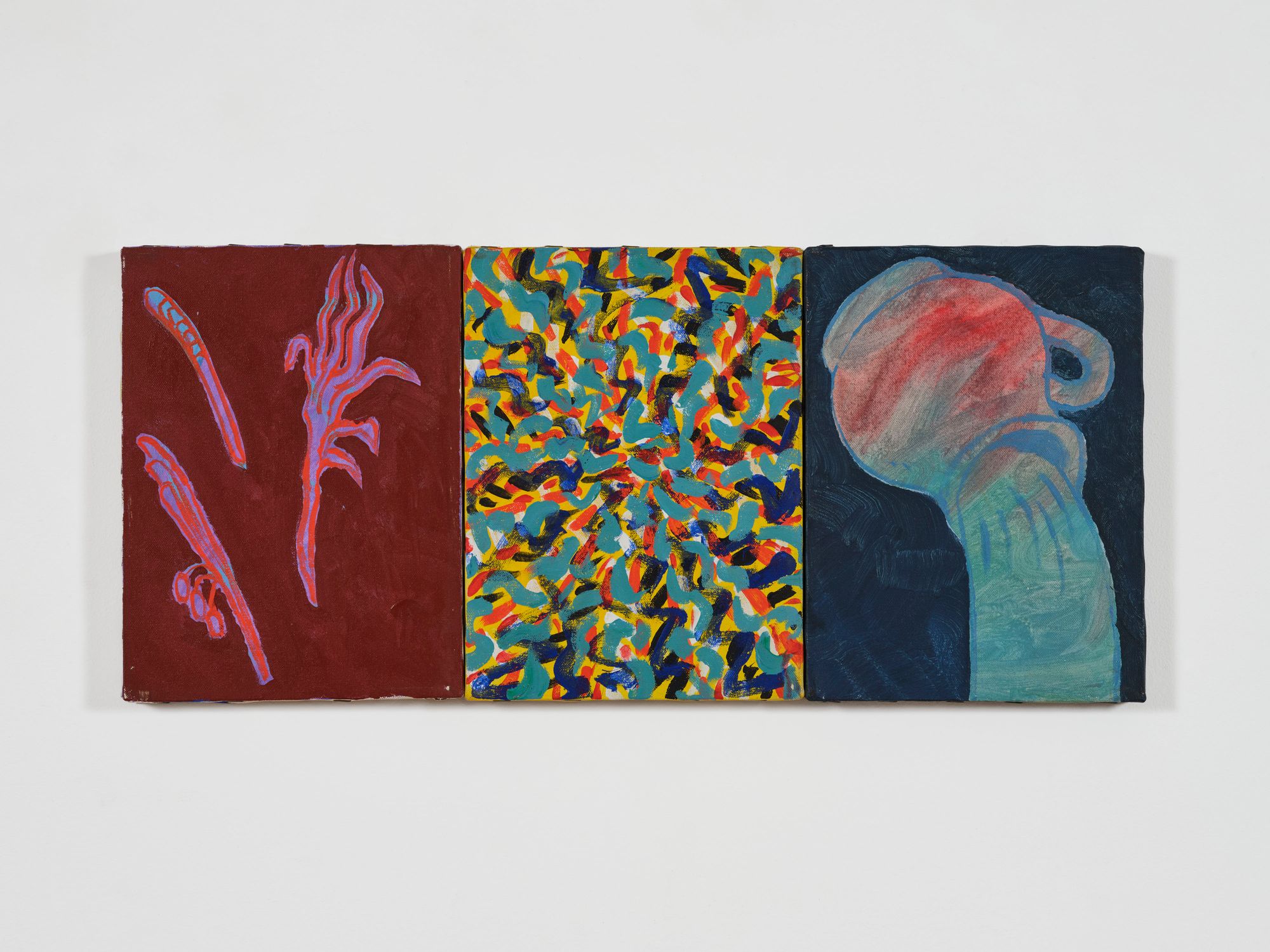
Untitled (Plants, Energy, Source)
Acrylic on canvas (triptych)
12 x 27 inches
1982
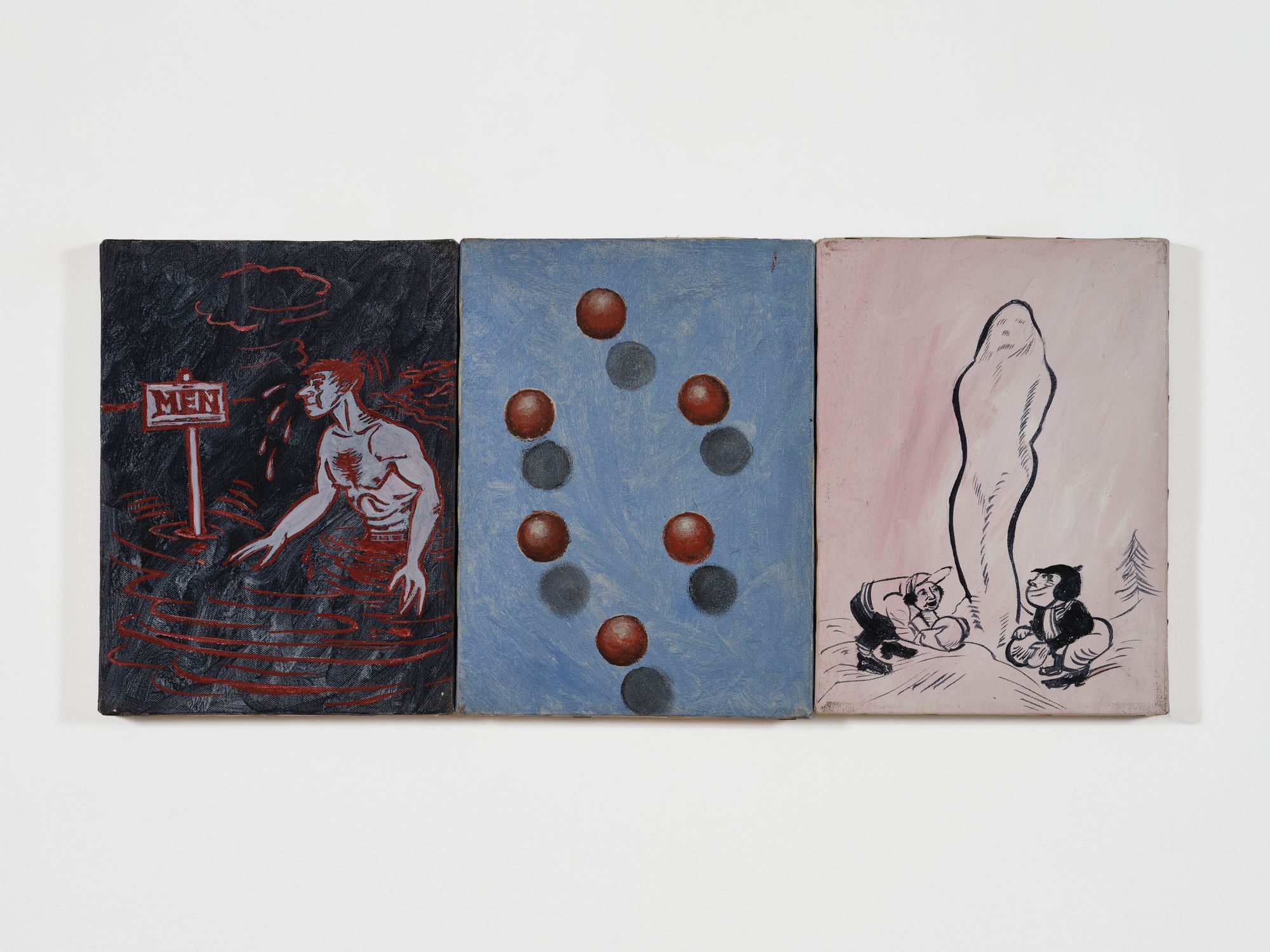
Male Humor
Acrylic on canvas (triptych)
12 x 27 inches
1982
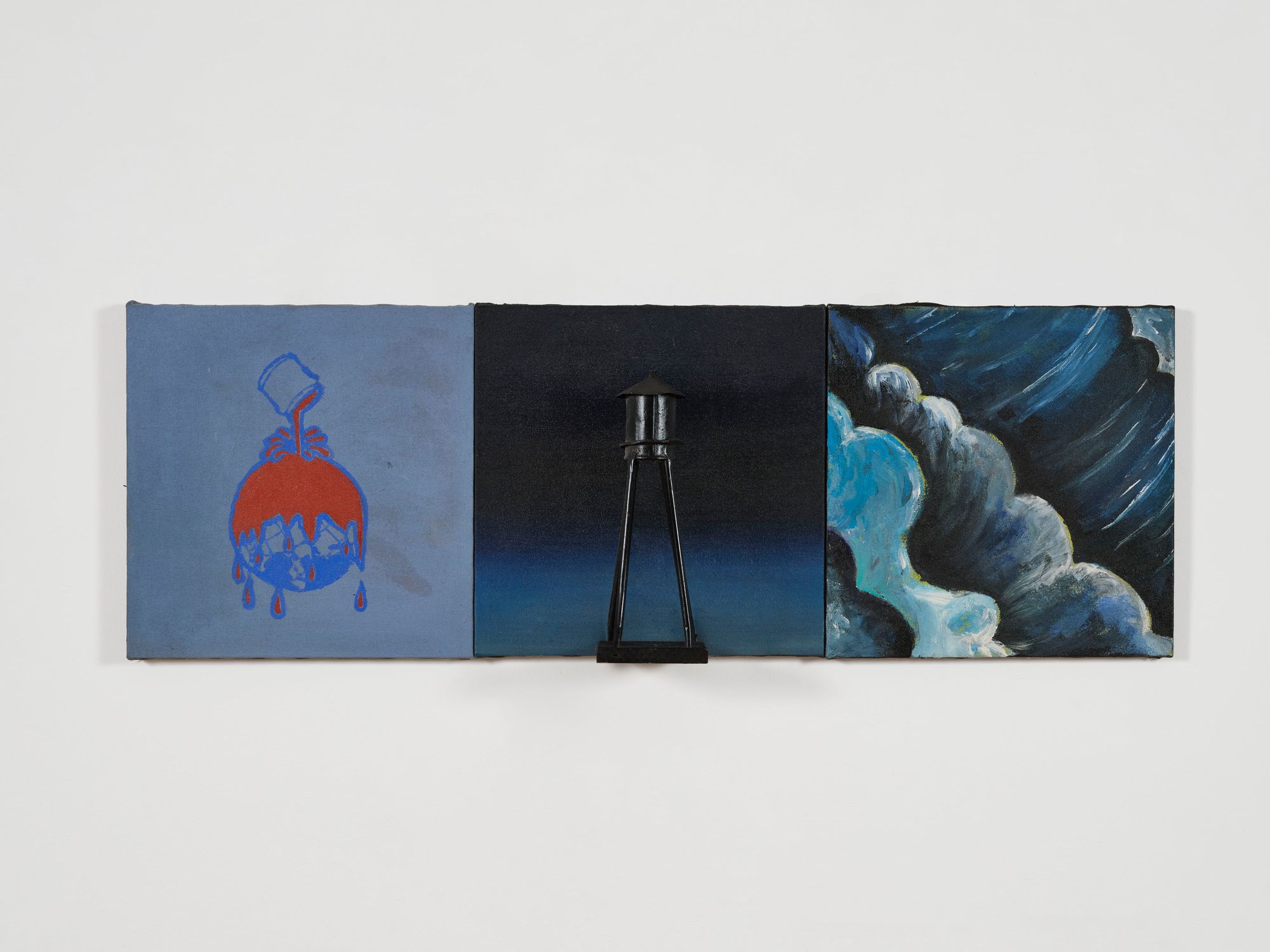
Untitled (Cover the Earth, Background with Tower Object, Waves)
Acrylic on canvas and found object (triptych)
15 x 45 inches
c. 1984

Untitled (Lotus, Flame, Flowers)
Acrylic on canvas (triptych)
24 x 54 inches
c. 1982

Male Painting
Acrylic on canvas (triptych)
12 x 27 inches

